








Carly Edmundson, President & CEO of CentrePort Canada
Polymershapes Winnipeg is the latest business to locate in CentrePort Canada, expanding their operations from 14,000 to 20,000 square feet.
On May 20, 2025, Polymershapes officially opened at 55 Durum Drive in West Creek Industrial Park, a modern industrial development in CentrePort Canada, located in the RM of Rosser. This is the third time the Winnipeg location has moved since it opened in 1988, and the first time General Manger Michael Nyczai has moved with company since he started there 24 years ago.
Nyczai manages a team of 13 people at Polymershapes Winnipeg, one of 11 locations across Canada. Polymershapes is the premier distributor of plastic sheet, rod, tube, film and associated products. It has been in business since 1946 and today there are 80 locations across North America.
“Over the last six years, the business has really morphed into value-add,” said Nyczai.
The company has grown from cutting basic plastic

sheets into the right shape and size, to better serving their customers with new equipment that can create finished parts for Original Equipment Manufacturers (OEMs) in various industries.
Jerry Storie
Most of us will have some memory of a teacher’s outsized influence on their own development or on their perception of what is important in our lives and in the world.
I, too, had a remarkable English teacher who made me a reader. But the teacher who had the greatest impact on my approach to teaching and what I value about learning and education, generally, came from my grade 8 teacher and our Baldur School principal, Sam Yarmchuk.
One June day in 1964, he walked into our classroom and told us to put our science texts and note-
7 ‘Teaching kids to think' u



These days Andrew Balfour is a soughtafter music clinician, conductor, and composer, but he remembers the people who noticed his musical gifts and helped him to become the extraordinary composer and musician he is today. His first indications that he had a special musical talent came when he was a young singer with the boys’ choir at All Saints Anglican Church in Winnipeg. He was inspired by the music right from the start, and over time he was selected for solos with the choir and won recognition for his performances at the Winnipeg Music Festival. Not only did Andrew make life-long friends in the All Saints Choir, he had the chance to travel and perform in some of the great cathedrals in Europe. For Andrew, music was a place where he felt appreciated and recognized. His talents lead him to learning the trumpet and the trombone and studies in music at the Brandon University and later at the University of Manitoba.






























































































































































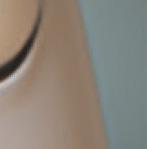
















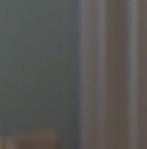

























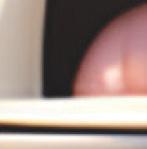



















































































A cleaner, safer planet for your children and grandchildren starts at home. Throwing unwanted medications or used medical sharps in the trash doesn’t make them disappear—it puts your loved ones at risk. The safer choice is simple: return them to a collection location, where they’ll be disposed of safely and responsibly.




Follow us online at: lifestyles55.net
Facebook: Lifestyles55
PUBLISHER
Pegasus Publications Inc.
EDITOR
Dorothy Dobbie dorothy@pegasuspublications.net
ART DIRECTOR
Karl Thomsen karl@pegasuspublications.net
GENERAL MANAGER
Shauna Dobbie shauna@pegasuspublications.net
CONTRIBUTORS
Jeff Bereza, Lucille Bruce, Brent Buchanan, Romel Dhalla, Dorothy Dobbie, Shauna Dobbie, Zofia Dove, Conrad Eder, Carly Edmondson, Stefano Grande, Jim Ingebrigtsen, Evelyn Jacks, Kevin Klein, Ian Leatt, Arshdeep Mangera, Paul Moist, Fred Morris, Daniel Raiskin, Seneka Samarasinghe, Trudy Schroeder, Jerry Storie, Marnie Strath, Wayne Weedon.
Canadian Publications mail product Sales agreement #40027604
PRINT ADVERTISING
Gord Gage • 204-940-2701 gord.gage@pegasuspublications.net
SUBSCRIPTIONS
If you would like to receive Lifestyles 55, we offer both monthly newspaper and online formats. To place your order, call 204-940-2700. Subscriptions are $36.00 per year, plus tax. American Express, MasterCard, Visa and cheques are accepted. To view a back issue online visit lifestyles55.net
Published monthly by: Pegasus Publications Inc. PO Box 47040, RPO Marion Winnipeg, MB R2H 3G9 204-940-2700 Lifestyles55.net
DISTRIBUTION
Available at more that 20 rural towns and cities as well as more than 100 locations in Winnipeg. If you would like bulk copies of this publication, contact Gord Gage at (204) 940-2701 or gord. gage@pegasuspublications.net. Also available digitally at whatsupwinnpeg/ lifestyles and on Facebook: Lifestyles55
EDITORIAL SUBMISSIONS
Call Dorothy Dobbie at (204) 940-2716 or email dorothy@pegasuspublications.net for more information and guidelines. Any opinions expressed in columns by our contributors are their own opinions entirely and are not necessarily shared by Pegasus Publications Inc. All information presented by the contributors is the responsibility of the writers.
Lifestyles 55 is published monthly. Reproduction in part or in whole is prohibited without seeking permission in writing from the publisher.
Copyright Pegasus Publications Inc.




We had an election. Wab Kinew won. He is premier, not just because of his smile and easy podium manner but because he had economic dreams for the province which he shared with us. He does understand that, as he puts it, “the economic horse pulls the social cart”.
Yet, his intent and implementation seem to be miles apart. This is not new. I saw the same thing in the previous government and even discovered instances where the ministers and even the premier were outright lied to about key files. Often, they heard, “Yes, minister”, only to discover later that not a single thing had happened as it was understood it would.
Where is the disconnect? Why is this happening? We have many smart and dedicated public servants who want to make things happen, who live here and pay taxes and see the deplorable state of our financial situation. Why can’t they change things? Why, when the government and the Premier says, Go, does it take so long to press Start?
One reason, I am told, is the system of seniority that plagues the public service. You advance according to years of service unless something happens to deliberately interrupt that flow. And when it is interrupted, the consequences are often devastating to the person who has been elevated early. One individual that I know personally was elevated to a former Premier’s office only to find an atmosphere of hostility and resistance. This individual eventually ended up demoted with a useless title and sent into isolation where there was little influence that could be exerted.
This person is no longer with the public service as is the case with so many other eager, talented, and energetic individuals who see themselves dead-ended and who leave, taking their talents and energy elsewhere. That leaves the lethargic, the personally biased (and I don’t mean in terms of left or right), the timid and the mediocre who cannot bear the threat of real competition. The quality of the public service is degraded. The policy makers lose power because mediocrity is risk-averse and doing nothing, to their minds, is safer than doing anything.
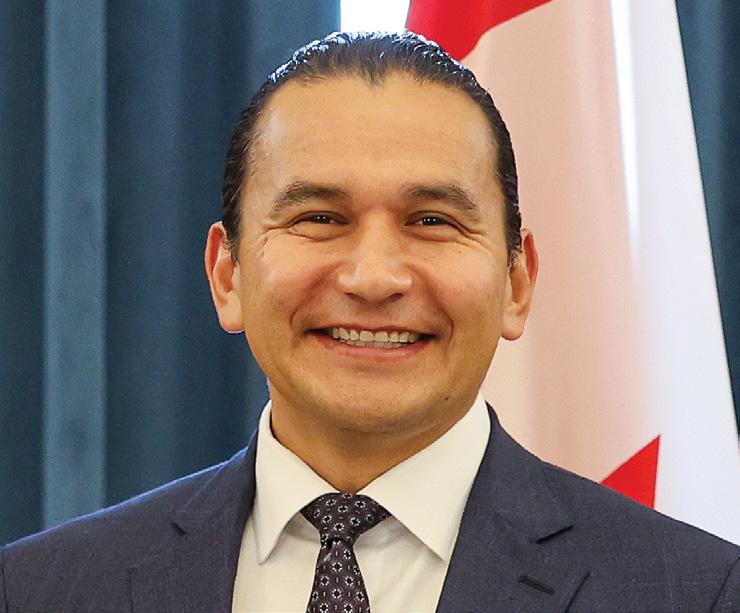
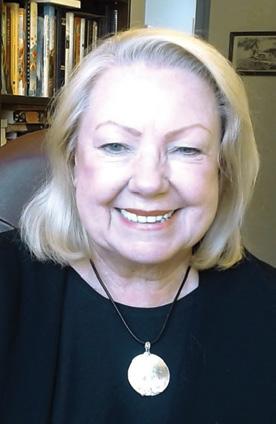
Dorothy Dobbie
It happens in large corporations, too, but there are consequences in business because the failures are more quantifiable. If the inefficiencies are not detected in time, the final consequence is failure of the business.
The next layer of resistance is more insidious. This is the cadre of political staff that surrounds members and ministers of all levels of government. At the federal level the numbers have ballooned over the past decade, growing by one third in five years between 2019 and 2024. Ministerial staff rose from 609 to 815 in that period. Don’t blame the ministers. The hiring is done by the PMO. This centralization of power is one of the serious issues facing our democracy and it is not limited to the federal government. Provinces have been quick to follow suit. Here in Manitoba, it has become routine for the leader’s office to hire the political staff who report to the hiring agent in the leader’s office and nominally, therefore, to the Premier, not to their minister. But does all the information get to the premier?
In speaking to several current and former staffers from various political parties, I discovered the same story. They only tell their minister “What he/she needs to know”. That also includes the leader/premier, prime minister and, presumably,





the mayor. This has been confirmed to me by ministers, both former and sitting, who are frustrated with the system as it stands but don’t know what to do about it. These go-betweens place a barrier between the public service and the elected representatives. The system also puts a huge amount of power into the hands of a (usually) young group of men and women with no life experience and often very bad judgement. Created to preserve power in the hands of the leader, the ultimate effect has been the opposite in many cases. We have all heard about the Gerald Butts, the Katie Telfords and the Jenni Byrns who now symbolize this system federally. We know less about the individuals behind the power at the provincial level, but they are just as involved, according to the once chief of staff to a former NDP premier.
Ministers should hire their own staff and ministers should be accountable to follow up with the public service to ensure that decisions are followed through in a timely and efficient manner.
Ministers should deal directly with their deputies and should be able to dismiss those who don’t deliver. Leaders should require accountability directly from their ministers. The premier must be given ALL the information, not just what someone deems it appropriate for him to know. Back up material should be available along with briefing notes so that there is an easy source for a leader or a minister to examine for more detailed information.
Timelines should accompany reports.
Those given the role of overseeing the province’s mandate must have all the information and the authority to demand action and results. Anything else undermines the minister. It undermines the public service, and it undermines democracy.
I realize this analysis is very superficial, but we have to start somewhere. In the case of Manitoba, the Premier must demand that the Clerk of the Executive Council (who is the head of the civil service) and his ministers be accountable for their lack of delivery on his instructions. If the economic horse truly drives the social cart, let’s get it out of the barn and into the fields of action!



In the modern world and in the old, it has always been critical for a country to be able to defend its borders, especially if that country has some pretty luscious advantages that others may be eyeing. Canada is one of those countries.
Over the years, our military has acquitted itself well, the bravery of our soldiers, sailors and airmen, showing what a formidable force they were. Our armaments industry built well and strong. We manufactured airplanes, built ships and submarines and transport vehicles and had a vibrant munitions and gun industry. In short, our production strength of those years and the subsequent prosperity it engendered is what we have been living on for the past 80 years, as we gradually watched this industry degrade and disappear.
In 1962, we had 126,474 armed forces in a country of 18 million. Today, we have just under 55,000 with a reserve of about 22,000 in a population of 41 million. You do the maths. This is clearly insupportable. Worse, our equipment is aging, some of it bought second hand, and some of it inoperable.
So, it is time to retool, resupply, recruit and upgrade. And we need to do as much of it as we can do right here in Canada. Sadly, we are in a financial mess that will take realistic thinking to overcome. We cannot have our cake and eat it too. While there are dozens of pressing issues facing the country, it is hard to grapple with the vital need to replenish and refresh our defenses, but the sad truth is, that if we don’t nothing else may matter.
might have to take on manly jobs in the effort. And kids would have to become a little less dependent in a big hurry. After all this is what occurred in the past and I see no reason why it wouldn’t occur again.
I am not suggesting that this is about to happen, but we must be prepared for any event. Remember Pearl Harbour? The Americans didn’t expect to be attacked by Japan, either.
What will it take to get our defence machine back in action? Well, let’s hope it is not war, and it should not be war, but we cannot take the risk of being unprepared. So, let’s look at this as a priority, even while knowing that we have to deal with crime, with the cost of living, with too fast an influx of immigrants and a resulting shortage of housing.

One thing we can count on is that if we are building domestically, employment will rise. Schools will be forced to prepare more young people for practical jobs where we are productively engaged in making tangible things, not just pushing ideas around a keyboard.
And I think they are ready. Many emerging adults are looking for satisfying real labour, being outdoors, producing real things, being able to say with pride, “I built that”.
or years now, Canada has fallen short of the promises we have made to our allies. In 2014, NATO set a benchmark that members should spend two percent of gross domestic product (GDP) on defence. Canada has remained closer to 1.3 percent. Now, NATO has raised the bar much higher: five percent of GDP by 2035, with 3.5 percent to go to core military capabilities and 1.5 percent for “resilience”, which is the infrastructure, supply chains and cyber defences that support armed forces. This is a whole different order of magnitude. It means we need to buy and build ships, planes, submaimes and satellites, and invest in the ports, bases, runways, northern logistics and other things that make those tools effective.
Canada’s GDP is just over $3 trillion. Meeting the NATO goal would mean annual defence spending of roughly $150 billion by 2035, compared with about $39 billion today. The scale of spending is daunting, but on a moral and practical basis, we’ve got to find a way.
If Canada matched Germany, we would need around 103,000 troops. Matching Britain or France would mean 125,000 to 155,000 personnel. At Polish or American levels, we would need more than 250,000 in uniform, three times our current number. However you cut it, our present force is too small for our population and our commitments.
Recruitment must expand dramatically. That means competitive pay, affordable housing, reliable health care and stronger family support. Training colleges and facilities must be modernised and scaled up to handle higher intake.
Canada’s breadth of backgrounds is also one of our strengths, yet women, racialised Canadians and Indigenous peoples remain under-enlisted. Building inclusive outreach campaigns and ensuring a culture of respect and belonging within the forces will be essential.

Our Reserves are underused. By offering flexible service arrangements, better benefits and recognition of civilian skills, Canada could make part-time service more attractive to students, professionals and tradespeople. Defence spending must put personnel first, or the rest will be wasted.
Carney is right in urging action on this front and correct is saying the procurement needs to be as local and domestically produced as possible. Whether it is realistic to think we will hit the five-percent-of-GDP mark promised by him in the short term is debatable, but I am fully behind the effort to start moving in that direction.
Think of it this way. If war was declared on us tomorrow, what would we do? We would drop everything to come to our defence. We would reduce our expectations of state, knowing that only through sacrifice can we guard the state, which, as much as we like to complain about it, is much better than many. Companies would show what gearing up really means – not taking months or years to study the issue, but to spring into action doing the things we instinctively know need to be done. As they did before, our First Nations partners would be right there with us, pulling out all the stops in order to protect our boundaries.
We might face rationing. The environment and climate change worries would be set aside. We might have to deal differently with health issues to spare doctors for service. Our women
Right now, there is far too much focus on how people feel, what their mental state is. I am not saying that those things are not important, but I also know that dwelling on self is depressing and demoralizing. Getting actively engaged in doing something for a higher cause or for someone else is wonderful medicine for the kind of malaise we see in the community today.
Canadians are filled with ingenuity. Our history imbues us with a sense of innovation that comes from living in an undeveloped land where every day can be a challenge and you have to think for yourself to survive. This still exists in our North and in many rural communities where eking out a living leaves us too busy to feel sorry for ourselves.
But there is one barrier! Artificial regulations need to be dismantled so that the kind of vigour required can be applied. We have to remove the cap on petroleum production because manufacturing takes large amounts of energy. We have to enlist meaningful support from Indigenous communities and that means training and providing jobs so that they can also reap the benefits of a renewed industrial sector.
Will all this happen? Hard to tell because Carney always leaves far too much unsaid to be sure of where he is going.

Canada relies on NATO not only for global stability but also for our own sovereignty. The Arctic is opening as ice recedes. Russia’s war in Ukraine shows no sign of ending. Cyberattacks are constant. We cannot continue to lean on allies while underfunding our own forces. Credibility matters. I’d like our country to be taken seriously in negotiations, diplomacy and peacekeeping, and we must carry our share of the load.
For two decades, governments have promised to fund new priorities by “finding efficiencies.” The results have been modest at best. Most of the easy savings were found long ago, and much of what was branded efficiency was really just hiring freezes or deferrals. The truth is, efficiencies are tapped out. We have to make some serious choices about taxes, borrowing or spending to find the money needed.
Modern ships, jets, submarines and satellites are useless without skilled people to operate them. The Canadian Armed Forces have about 63,000 Regular Force members and 22,000 in the Reserves, which is roughly 85,000 total, well below the government’s authorised target of 71,500 and 30,000. That leaves a shortfall of more than 16,000. Without people, equipment is just metal.
How far off are we compared to our allies? The numbers are stark. Canada’s ratio is about 0.21 percent of our population in uniform. Germany, with 84 million people, maintains about 213,000 troops, or 0.25 percent. The United Kingdom is closer to 0.31 percent, France to 0.38 percent, and Poland, which has invested heavily since Russia invaded Ukraine, sits at about 0.61 percent. Even the United States, at 0.63 percent, is in that range.
Canada’s military equipment comes next. It is well below what is required for a country of our size and commitments. The Navy has 12 frigates and 4 aging submarines. Apparently, we need on the order of 15 to 25 modern frigates and six to 12 new submarines to cover three coasts and meet NATO expectations. The Air Force is transitioning to 88 new F-35 fighters, but that is still fewer than many believe are required. On land, the Army operates only about 80 tanks and a few hundred armoured vehicles, while a credible force would need significantly more: roughly 180 to 250 main battle tanks and about 1,000 to 1,500 armoured vehicles.
Moving toward five percent of GDP means leaving all of our many bandaid fixes behind. We need to expand fleets of military platforms, not simply maintain them, with next-generation drones, Arctic-capable patrol ships, long-range air defence and modern logistics. Without a larger, more modern equipment base, Canada cannot realistically defend our territory or contribute meaningfully to the operations of our allies.
Buying offshore increases costs and forfeits domestic benefits. Canada already designs and refits Arctic-capable vessels and builds complex warships under the 2010 policy called the National Shipbuilding Strategy. We also contribute major systems and structures to international aerospace programs, though we no longer design complete combat aircraft. Our challenge is scale. We need greater capacity and a clear strategy to keep intellectual property here, rather than sending our brightest engineers and researchers abroad, or just selling our intellectual property without understanding what
5 ‘Military commitments'
A woman is killed every 4.2 days — my mom was one of them
It was a quiet Sunday night, September 22, decades ago. My younger teenage brother had just left for his part-time job. None of us knew that night would change our lives forever. It was the night our mom, Joanne, was brutally murdered by her husband, Bob.
That moment is seared into my memory. It was not only the loss of my mother, but also a cruel reminder of the reality of domestic violence in Canada. I was one of the children left behind.
That moment is seared into my memory. It was not only the loss of my mother, but also a cruel reminder of the reality of domestic violence in Canada. I was one of the children left behind.
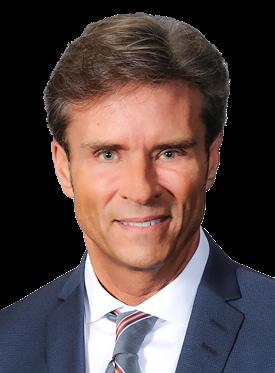
As a young man, my world shattered. I carried the weight of losing my mom in silence, believing that if I buried the pain deep enough, I could survive it. But silence didn’t protect me — it left scars that I still carry today. The truth is, I’ve struggled with mental health ever since. Keeping it inside only made the pain worse.
What I’ve learned is that silence never heals. It isolates, it festers, and it convinces victims and survivors they’re alone when they’re not. I now know how important it is to speak out, both about our own struggles and when we see the signs in others. Too often, neighbours, friends, and even family notice but stay quiet. Speaking up — asking the question, making the call — can save a life.
My mom was an incredible woman. She raised three boys on her own, worked full-time, and later chased her dream of becoming a nurse at 40. She was resilient, loving, and fiercely devoted. But we didn’t have an easy life. We were a dysfunctional family that struggled financially every single day. My mom carried that weight, trying to give us stability even when there was very little to hold onto. Somehow, she still made us feel like the luckiest kids in the world.
Behind her brave smile, though, was a woman suffering in silence, terrified to ask for help.
Years later, at her killer’s parole hearing, we learned details we hadn’t known — her repeated cries for help, her nights in shelters, the terror she lived with every day. Like so many, she was sleeping with one eye open, just trying to survive.
Her story is not unique. According to Statistics
Canada, a woman in Canada is killed by an intimate partner every 4.2 days. In 2024 alone, 187 women and girls were violently killed nationwide. In Ontario, 62 were killed between late 2023 and late 2024. Ottawa saw three femicides in that span. Spousal homicide accounts for 15% of all homicides, and women are nine times more likely to be murdered by an intimate partner than by a stranger.
The risk spikes during separation — up to six times higher for separated spouses — and 60% of intimate partner homicides involve a known history of family violence (Canadian Femicide Observatory for Justice and Accountability). Children are deeply affected too: in 2023, 64% of spousal violence cases with kids involved them witnessing or hearing the abuse, leaving scars that last for generations.
And this is not just about women. Men are victims too, though less often acknowledged. Children, seniors, Indigenous women, LGBTQ+ Canadians — domestic violence affects people from every walk of life. It doesn’t discriminate by income, race, or address.
Governments at every level know the scale. As of 2024–2025, 95 Ontario municipalities and Nova Scotia have declared intimate partner violence an “epidemic.” Ottawa Police adopted the term “femicide” in their reporting and added two new IPV risk navigators, documenting 6,636 incidents and laying 3,355 charges in 2024 (Ottawa Police Service). Shelters across Canada continue to be stretched thin — on a single day in 2023, 7,581 women and children were housed, 45% of them children and 29% Indigenous (Women and Gender Equality Canada).
But even when charges are laid and convictions follow, the consequences for abusers are often minimal. Only about 20 to 30% of domestic violence convictions in Canada result in jail time, with probation being the most common sentence. When incarceration is imposed, it is usually short-term. In Ontario, the median sentence is just 40 to 50 days. More recent studies show average terms of three to six months for mid-level offences, and two to four years for aggravated cases. First-time offenders are often diverted into programs that leave them without a criminal record if they show remorse and com-

plete treatment. Only repeat offenders tend to face sentences of one to three years or more. For families like mine, these outcomes deliver a painful message: the justice system does not treat these crimes with the seriousness they deserve.
Domestic violence is not a private issue. It is a public health crisis. The Department of Justice Canada once estimated the cost of spousal violence at $7.4 billion a year in lost productivity, policing, health care, and more. Yet even with those staggering costs, shelters and services remain underfunded. I share my story not for sympathy, but to honour my mother. To speak for those too afraid to speak. To tell others living in silence that they are not alone, and what happened to them is not their fault.
For me, the scars remain. I live with the mental health consequences of losing my mom the way I did. But I’ve come to see telling her story as a blessing. It allows me to remember her strength, her love, and to carry her voice forward.
Domestic violence thrives in silence. Let’s break it. Speak up. Support survivors. Fund shelters. Hold the system accountable. And most importantly, remind those living in fear that they are not alone.
Kevin Klein is the publisher of the Winnipeg Sun.
This October marks the halfway point of my being an elected MLA here in Manitoba.
I remember the day at 23 Kennedy going before the selection committee to be interviewed for the privilege of running for the PC Party of Manitoba.
Looking at the pictures on the wall, I saw so many familiar faces including past premiers Gary Filmon, Sterling Lyon, Brian Pallister to name just a few. With each one of them I saw a similar look in their eyes, and I carry those pictures
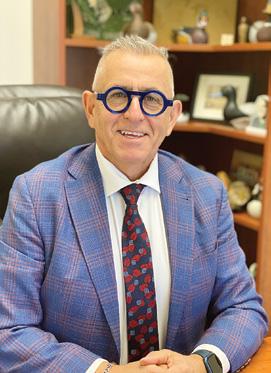
in my mind every day. What I saw was hope and honour: hope to make this province better than it was before they got there; honour to be one of the very few people to be elected and have the ability to make a difference in this great province of ours.
I have been reflecting back on that day in front of the selection committee – a 60-year-old Manitoban who had just retired from a very rewarding agriculture career. And as I left, I knew it was time for me to not only unretire, but to help car-
ry on the legacy of the many that have come before me in the constituency of Portage la Prairie.
After receiving the honour of being elected as the MLA for Portage la Prairie, I saw right away things that the current NDP government had forgotten about. I knew we needed to do everything we could to make sure those forgotten things would happen. One of the first was the need for an MRI in the new Portage la Prairie Regional Hospital. The hospital was started by the previous PC government led by Premier Pallister. Four years after he left, the wait time for an MRI has grown higher and higher – there are 28,000 people waiting for a proper diagnosis.
My PC colleagues and close to 10,000
Manitobans have signed a petition for the MRI in Portage. We will never stop working until this becomes a reality.
Obby Khan is now our new leader. He has that same look in his eye as those in the pictures at 23 Kennedy. He has re-invigorated this team to do the absolute best we can for Manitoba.
What I am trying to say is that I have found the absolutely best, and most rewarding career path that I have ever been on. I can’t wait to see what the next years bring.
What I am saying is that age is merely a number, and whatever you do, do it with passion, do it for the right reasons, and do it because you can!
Jeff Bereza is the MLA for Portage La Prairie.
Continued from page 4
we’re giving up. We’ll need agreements with allies (who don’t back out of deals) to buy from us or build with us. Anchoring as much work as possible in Canadian shipyards, factories and research labs is one way to do this. This means building ships in Halifax, Lévis (in Quebec) and Vancouver, where our current shipbuilding facilities are. It means investing in northern ports and runways, setting up ammunition and drone production lines here, and lever-
aging Canadian expertise in aerospace, robotics and Arctic operations. Every dollar we spend at home strengthens both our military and our economy.
This new figure of five percent of GDP is a massive reach. It means about $150 billion annually by 2035. With the overall federal budget at around $449 billion, the money cannot come from efficiencies alone. We have to consider raising the GST, which is the quickest way to come up with the mon-
ey. Every percentage point the GST is raised brings in around $10 billion. The government could issue a new defence bond, which could bring in around $5 billion a year; it’s borrowing, but the money stays in Canada.
But… if we don’t improve defense, how much more will it cost us when we need it, when we are attacked?
There is one more thing, and it fills me with dread. Once we have built up our military, we will want to use it. Power
without restraint is a liability. Military strength should deter aggression, protect our sovereignty and support our allies. It should only be used when absolutely necessary. I can say that until I’m blue in the face and I know there are people out there who will never hear it. Canada must invest with the understanding that military power is a shield, not a sword. It is the foundation that allows every other part of our society to flourish.

There was a time, before big government, cell phones, lap top computers, video games and even television with its hundreds of channels, when people wanting to make connections with likeminded individuals flocked to join one of the great variety of church groups and social service clubs dedicated to serving the community, club such as the Masons, the Royal Canadian Legion, Kiwanis or Kinsmen.
In recent years, for many of these organizations, It has been a challenge to attract new, younger members. Nonetheless, the organizations are still with us. Arguably, one of the most successful of these clubs has been the Winnipeg Kinsmen Club which, last year, celebrated its 100th anniversary.
In celebration of its 100th anniversary, reports the club’s operations manager Sarah Gibb, the Winnipeg Kinsmen initiated a number of events that honored their rich history and looked ahead to the future. The celebratory year began on February 20, 2024, with a special proclamation ceremony by the City of Winnipeg declaring “Kinsmen Recognition Day,” at the club’s headquarters at 161 Taapweewin Bay (previously known as Grandin Street). The celebrations culminated at the RBC Convention Centre on September 21, 2024, in a Centennial Gala which Gibb describes as “an elegant evening of reflection, gratitude, and community pride”.
in Montreal.
In Winnipeg, he recruited ten other men to join him in forming the Winnipeg Kinsmen chapter. They met at the St. Charles Hotel to discuss forming a club locally. The Kinsmen Club of Winnipeg was officially chartered on January 29, 1924, with Alf Rosevear appointed as its inaugural president. The first general membership meeting followed on February 20, 1924.

According to club records, Winnipeg Kinsmen was founded on December 17, 1923, shortly after a gentleman by the name Herman Mawhinney moved to the city from Montreal. Mawhinney was originally from Hamilton where he was a co-founder of Canada’s first Kinsmen Club. He co-founded a second Kinsmen Club
As the third Kinsmen Club established in Canada and the first in Western Canada, the Winnipeg club quickly became known as “the Mother Club of the West.” Today, with the Montreal club no longer in operation, it stands as the second-oldest active Kinsmen Club in the country, surpassed only by the founding Hamilton Club.
to local and national charities, partnering with dozens of organizations to address pressing social, health, and community needs.
Among the more high profile projects supported by the Winnipeg Club are the Kinsmen Discovery Centre at the Assiniboine Zoo, Winnipeg Harvest, Operation Go Home, Easter Seals Manitoba, Red River Exhibition, Agape Table (which received a million dollars) and the Manitoba Wildfires Relief Fund ($100,000.)

(According to Gibb, there are currently 27 active Kinsmen, Kinette and Kin clubs in Manitoba, including a second one in Winnipeg.)
An early highlight for the new Winnipeg club was playing host to the first national Kin Canada convention in 1926, marking the city as a foundational hub in the service club’s national development.
According to information provided by Gibb, the Winnipeg Kinsmen are committed to “coming together to build a better Manitoba, raising funds through engaging events fundraisers, in particular, its Jackpot Bingo, Kin Kar Raffle, and the 50/50 Raffle, and providing support to numerous nonprofits across Manitoba. The club contributes millions of dollars annually to a wide range of causes, from equipment for individuals
Iwas saddened by the April 29, 2025, passing of Elmwood-East Kildonan Winnipeg City Councillor Jason Schreyer. Jason was in the public eye for most of his life. Jason's father, Ed Schreyer, was sworn in as Manitoba's youngest Premier two days before Jason's second birthday. In 2014, Jason was first elected to Winnipeg's City Council. He was reelected in 2018 and 2022 and became a champion of food security. Also, Jason spoke about the need to deal with runaway construction inflation. Major construction projects have become pipe dreams. The death of Jason has necessitated a by-election on October 25, 2025. This story will deal with one of these Elmwood East Kildonan pipe dreams projects.
Louise bridge and Royal family connections
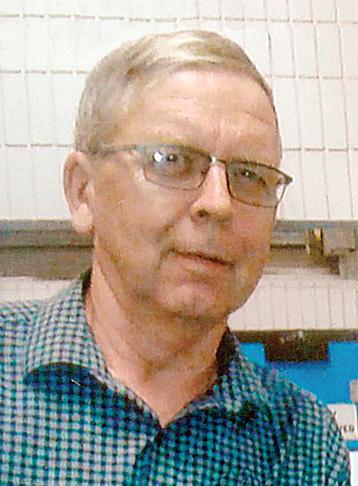
On August 1, 1881, Canada's Governor General, the Marques of Lorne, opened the Louise Bridge. Historical accounts remember problems associated with the free alcohol given away at the bridge's opening ceremony.
The Louise Bridge was named after Queen Victoria's daughter Princess Louise, the Marques of Lorne's wife. Both Jason Schreyer and Princess Louise lived in Ottawa's Rideau Hall. Princess Louise lived there in the early 1880s when the Marquess of Lorne was Canada's Governor General. A century later, Jason lived at Rideau Hall when his father Ed was Governor General. In 1910, the base of the 1881 bridge was used to construct the current bridge.
In recent years, it has become obvious that the Louise Bridge is on its last legs. A November 28, 2008, Winnipeg Free Press story speculated that construction of new four lane bridge would begin in 2015. Prior to the 2015 Federal Election, Bartley Kives, then a Free Press reporter, wrote a story titled Political Road Games. In the article, Kives pointed out that the three levels of Government moved the Waverley Underpass ahead of the Louise Bridge on the City's list of priorities. The story speculates that the Federal Government was attempting to hold onto the Winnipeg South Centre seat. On 2015 Election Day, Conservative Incumbents lost both Winnipeg South Center and Elmwood Transcona the home of the Louise Bridge. The Waverley Underpass opened in 2019.
The late Jason Schreyer was a strong advocate for a new Louise Bridge. Jason, his son Jared, and MLA Jim Malloway are shown in an October 2021 photograph

In 2024, she reports, in celebration of its centennial, the organization donated $2,743,000 to various causes. She adds that during the Covid Pandemic 2021–2022 year the club donated over $5.2 million to charities throughout Manitoba, underscoring their enduring commitment to community support.
The club maintains strong ongoing relationships with organizations like Special Olympics Manitoba, Habitat for Humanity, and Agape Table, among others. The club also plays a major role nationally, being one of the largest supporters of Cystic Fibrosis Canada.
In 2023, Gibb notes, the Winnipeg Kinsmen club was honored with a Manitoba Philanthropy Award for outstanding philanthropic work, highlighting their regular collaboration with organizations like Agape Table and recalling historic contributions like “Milk for Britain” during WWII.
Whether funding new playgrounds, supporting food banks, or contributing to addiction recovery programs, the Winnipeg Kinsmen remain a driving force for good in the province, Gibb Says. After 100 years, their commitment to service is as strong as ever — proving that while times may change, the heart of community spirit endures.

wearing New Louise Bridge Tee shirts (Community Review East, July 9, 2025).
As the Louise Bridge barely hangs on, the St. Vital Bridge, which opened on December 12, 1965, has been rebuilt. Abinojii Mikanah east of Waverley Street has been completely resurfaced. However, there seems to be no money to replace the inner-city Louise and Arlington Street bridges. Both Louise and Arlington Street bridges are well into their second century. One of the biggest challenges for the candidates in the Elmwood East Kildonan by-election is figuring out how to present their ideas about ensuring that Elmwood East Kildonan get its fair share of the infrastructure pie.
The Maloway factor
Jim Maloway has represented the area for the past 39 years (36 years as the MLA, and three years as the MP). Jim has fought hard for a new bridge. I have two recent Community News Stories written by Jim about the need for a new Louise Bridge in my files. During the 2023 provincial election campaign, hundreds of Maloway election signs included a promise for the bridge. Other NDP Candidates did not seem to mention the Louise Bridge on their signs. However, Jim
is a current member of the NDP Government Caucus. The obvious question is does the current NDP Government have money set aside to construct a new Louise Bridge? If not, why not???
The most immediate concern is whether the Louise Bridge is still safe. The bridge closed on May 23, 2025, for four days of annual maintenance. A series of city media releases pointed out additional concerns and extended the closure to mid-September. On August 20, the city announced that the Louise Bridge would open three weeks ahead of schedule on August 22 , 2025. What is the whole story? The Bridge seems to be totally rusted. The concrete surface is uneven. After every future closure, the Louise Bridge should be inspected by both city and provincial engineers before reopening. The province will be financially involved in the construction of the new bridge. Therefore, the province should be involved in ensuring the bridge is still safe.
The time has come for City Council to realize that all city bridges in every part of Winnipeg have to be eventually replaced.
Fred Morris is a Grandfather, Sports Fan and Political Activist.
books away. He said he had a special assignment for us. We were to work in small groups, which was somewhat unusual in the early 1960s, and gave us something to ponder. He asked us what we would do if the sun didn’t come up tomorrow? How would we survive? What we would be prioritize, and how would we respond to our friends and neighbors? How would we decide who should do what and who to do it with? And then, he let us work within our small groups for most of the morning.
It was the most exhilarating and unusual experience of my primary education. It struck me as the most useful thing that we had ever done, as students. He was asking us to think like an adult. He was asking us to solve a problem that was complex and urgent. I can remember the enthusiasm in the room as classmates tested ideas, checked with peers and enjoyed, not only the novelty of the question, but the fact that he was asking us to use our own thinking, our collective thinking, to solve a problem. It didn’t come from some preordained list on the blackboard or from a textbook. He was asking us to think, on our own. Not because we would be assigned a grade as result of our efforts, but just for the fun of thinking out loud.
face as adults isn’t about curriculum, it starts with curiosity. We need to understand the “why”!
There is no substitute for curiosity, for asking the question why. Why, if it comes from personal curiosity, leads us to answers. It is empowering and constructive. It leads us to the real purpose of education. As Thomas Huxley once remarked, "The most valuable result of all education is the ability to make yourself do the thing you have to do, when it ought to be done, whether you like it or not."

Much of the recent debate about the merits of grading, and the importance of a well-defined curricula fails to address the real purpose of education. Of course, we need to teach our children to be able to read and write and do basic math, all of which can be achieved in elementary school. But the real purpose of education is to give us the tools to learn for ourselves. To create adults capable of discerning what needs to be done and how it can be done. Solving the problems we
That’s advice that works on the individual level as well as on the social and political level. Let’s create schools where curiosity is the watch word. Let’s create schools where students engage in learning that motivates them. And let’s hold them accountable for that learning. It doesn’t necessarily require grades, percentages or any of those traditional assessment tools, but it does require that students can explain thoroughly what they have learned. If you want to know whether someone understands what they are talking about, give them the responsibility of teaching others. This is the principle of assessment supported by student-led conferencing. It’s very difficult to explain something to someone if you don’t understand it fully. I taught grade 6, and it was the most rewarding job, personally, I ever had. I used to tell people that grade 6 students, who are beginning to think like adults in some ways, because they can think abstractly, were old enough to talk to and still gullible enough to listen to you. It was a remarkably enjoyable age to teach.
Part of it was because young people at that age have become curious about the world around them, about themselves and others. My experience teaching grade

6 taught me two things. One, after the basics are mastered the idea that we can have an elementary curriculum that will perfectly prepare anyone for anything is naïve. And two, once a student is curious about something, your job is to encourage that curiosity and stay out of the way. Curiosity is the most important human attribute. Curiosity is what has solved most of the worlds endemic problems. Curiosity has led to understanding our world in ways that make the written curricula of the past few generations seem woefully inadequate. We could start with Galileo, who challenged the curriculum of his day by insisting that the sun did not in fact circle the earth. No curriculum has been written that can account perfectly for what comes next.
While I was Minister of Education, I dissolved the Curriculum Assessment Branch in the Department of Education. At one time, the department spent time and money trying to ensure that “the Curriculum” was being taught, rather than determining what skills students had acquired and how we could improve their reading and other capacities as learners.
Of course, in a world where knowledge is ever-expanding, defining a curriculum
beyond certain basics is creating barriers to learning new and perhaps more relevant things. Does it really matter if the grade 5 curriculum says to study Japan, but a teacher decides to have students study Nigeria? The act of applying one’s mind to a problem is the important attribute we need to teach our young children – not necessarily facts about any one thing. We should be teaching them to be researchers, to be investigative journalists, teaching them to view critically things that are going on around them. And while curriculum is more important in high school, particularly for science and math course, it is less important overall than engaging students in ways that make them think for themselves. That is why initiatives like the Seven Oaks School Division’s Big Idea (MET) School or Louis Riel School Division’s un-grading initiative that focus on student interests and gives responsibility to students for their own learning should be embraced.
Ultimately, we need to know that our students can read, write and think – because that is what will be beneficial for all of us in the long run.
Jerry Storie thinks and sometimes writes from Winnipeg.


“Our plastics are literally everywhere you look,” said Nyczai. “That tray you sit your drink on in the aircraft, every bus you ride, every grocery store you walk through, every mall.”
When Polymershapes Winnipeg reached the end of their lease on St. James Street in Winnipeg, Nyczai began looking for a new space they could grow the business in.
The commercial real estate market had limited options in the St. James neighbourhood. The buildings were older, they didn’t meet new sprinkler system requirements, and there wasn’t enough space, lighting or power.
“I couldn’t plug in another toaster at the old facility,” said Nyczai.
mershapes Winnipeg close to their customers and competition while expanding their footprint and capacity.

Carly Edmundson CentrePort Canada
Nyczai began looking in CentrePort Canada, where the new infrastructure and buildings would accommodate the business’s requirements and provide room to grow. He chose West Creek Industrial Park because the unit size and building layout fit the needs of the company.
The move to West Creek Industrial Park kept Poly-
“When I first started, we had a handme-down saw from the Edmonton facility, and a hand-me-down forklift and 30-year-old office furniture from the Vancouver facility.”
With 6,000 square feet of additional space and enough power to support new investments, Nyczai was able to hire another staff member, purchase two pieces of equipment, and outfit the shop with new furniture.
The new building is energy efficient with higher ceilings and better functionality, including a ramp, a graded parking lot, a power overhead door, and hydraulic dock lifts.
“Productivity is up,” said Nyczai. “People are more organized, we’ve got better space, a brighter working space, the employees are engaged and excited about a new building and loving the workspace. People are happy.”

no further than Fred Douglas Chateau (formerly Kiwanis Chateau)!
• LIFE LEASE independent living for 55+ in a close-knit community.
• Prime location with indoor access to shopping, dining, medical services, Arena, the Y and Millennium Library.
• Security and emergency response services for added peace of mind.
• Spacious one-bedroom and two-bedroom options available.
• Features include in-suite washer and dryer, and heated parking.
• Suites can be customized according to your preference.
• Cat-friendly.


Three companies now call West Creek Industrial Park home; Polymershapes Winnipeg joined tenants Medline Canada and Arctic Beverages as the first three companies to open new operations in the park this year. The 294,150-square-foot industrial park is a newly developed, premier industrial park located in the RM of Rosser, just west of Winnipeg. Developed by Hopewell Development Corp. and brought to market by Colliers International, the park offers modern, large-format industrial facilities with direct access to CentrePort Canada’s established transportation and logistics network.
CentrePort Canada is excited to see companies like Medline, Arctic Beverages and Polymershapes succeed and grow. These companies are thinking about the future when they make a location decision, and having room for future growth is one of the many selling features of the tri-modal inland port.
To learn more about Polymershapes Winnipeg, visit polymershapes-winnipeg.com
To learn more about CentrePort Canada, visit centreportcanada.ca
Carly Edmundson is the President & CEO of CentrePort Canada Inc.

IF
You should consider having the following in place
Will
The preparation of a will may seem like a daunting task, however, it is essential to ensure that your property is disposed of according to your wishes upon your death. If you pass away without a valid will, the law states what is to happen to your estate.
Power of Attorney
A power of attorney is a document which appoints an individual to handle your affairs in the event you become mentally incapable of making your own decisions. Nothing prevents you from continuing to make your own decisions while you are still competent. A power of attorney is an extremely valuable document to have in place in case anything happens to you which affects your mental ability, such as a stroke, coma or dementia.
Health Care Directive (Living Will)
A health care directive, commonly called a living will, is a document which appoints an individual to make decisions with regard to your health care only, while you are alive but unable to express your decisions yourself. This document is distinct from a power of attorney and deals only with health care decisions such as whether life sustaining treatments, such as CPR or blood transfusion, should be continued or withdrawn.
206 St. Mary’s Road, Winnipeg, MB R2H 1J3
DAVID G. VINCENT (204) 989-4236 www.taciumvincent.com
Recent studies show that Canadians are spending a lot of time and paying out-of-pocket to receive medical assistance their loved ones require and, in the process, are missing out on significant tax savings. It’s a trend likely to continue as Canada’s demographic ages rapidly.
Who are the patients who need care? One of the best ways to answer that question is to look to the people who are claiming the lucrative Disability Tax Credit. This is a lucrative, nonrefundable federal tax credit, transferrable between family members, in the amount of $10,138. There is an additional supplement for minor children with qualifying disabilities, of $5,914, which may be reduced depending on the claim for child care or attendant care expenses elsewhere on the return. In real dollar terms, this credit is worth about $2,500 in tax savings for adults and a maximum of just over $4,000 for disabled children, once provincial tax savings are factored into the mix.
$1,000 a month. This can include costs incurred for prescriptions, medical devices needed by the patient, transportation, the cost of hiring others to help, and professional services costs.1
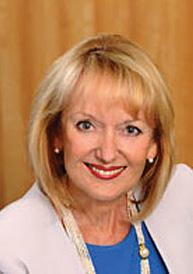
Evelyn Jacks
The disability must be prolonged, severe, and “markedly restrict” daily living activities. According to the Disability Advisory Committee, which releases an annual report to the Canada Revenue Agency (CRA) about the effectiveness of tax measures targeted for Canadians with disabilities, claims for the disability tax credit increase substantially as people age. Of the close to 1.5 million claims made, just under 57% are made by those age 55 and up. Unsurprisingly, 25% of all claims made are by those age 75 and older.
What are the afflictions the aged are restricted by?
The vast majority of these claim are for conditions related to mobility and mental functions. But other claims are for vision, hearing, life-sustaining therapies requiring ongoing time requirements of 14 hours a week or more (example for diabetes, kidney failure, etc.), difficulties with feeding, eliminating, dressing and speaking.
Sadly, only 64% of those who qualify for and have successfully completed the substantial requirements to get an approved Disability Tax Credit Form T2201 in place, actually make the claim on their tax returns. This is such an important form because it is the “gateway” to many other tax – related provisions. The list is quite long and includes qualifying for:
• For children: the Canada Disability Benefit and child care expense enhancements
• For workers: the Canada Workers Benefit and disability supports deduction,
• For homeowners: the Home Accessibility Tax Credit (up to $20,000 in costs), claims for medical expenses for home accessibility renovations and devices, the RRSP Home Buyer’s Plan for required moves when a disability arises, the Home Buyer’s Amount (up to $10,000 in costs), the Refundable medical expense supplement, the Multigenerational home renovation tax credit (up to $50,000 in costs) , the Registered disability savings plan and disability-related employment benefits.
Clearly, older people and their caregivers, many of whom have significant time stressors, need to access prompt tax filing assistance in an increasingly digital world. Unfortunately, recently, this effort has been confounded by ever-longer wait times for help at the CRA.
Who are the caregivers? Both men and women help, but women still form the larger group of caregivers. It is estimated that 5.7 Billion hours of unpaid care are provided in Canada every year with close to 50% of caregivers needing time off from work to do so. This leads to a number of losses: career advancements, salary, pensions and health benefits, to name a few.
Importantly Stats Canada has reported that 25% of caregivers are over the age of 65. This is a significant contribution to society by our elder demographic. Our tax system does not recognize this financial sacrifice well. The income-tested Canada Caregiver Amount of just over $8600 in 2025, a non-refundable tax credit, does not do these efforts justice. There is an opportunity in the upcoming November 4 Federal Budget to fix this.
What are the costs of caregiving? Did you know for example, that the average caregiver in Canada, the majority of which are women, will have close to $6,000 in out-of-pocket costs each year, for expenses paid to help their loved ones? Some studies have found that 22% of these caregivers spend as much as
What are commonly missed medical expenses? This includes medical travel of more than 40 km (one way) for a medical service or treatment which is not available closer to home. When travel is at least 80 km (one way), in addition to the travel costs, claims for accommodation, meals and parking may be made. Further, if a medical practitioner certifies the patient cannot travel alone, the costs of travelling with an attendant may also be claimed.
This can include, by the way, travel for treatment incurred outside of Canada if the medical services required are either not available in Canada or wait times in Canada are too long. Many people also are unaware that the costs of travel insurance or private medical insurance premiums may be claimed. Be sure to be informed. It can really pay to consult with a qualified tax specialist whenever there is a

significant change in health in the family. Look for a professional with specialized credentials. This relationship can pay off for years to come.
Notes:
1. https://enrichedthinking.scotiawealthmanagement. com/2025/04/01/the-costs-of-caregiving/ Evelyn Jacks is Founder and President of Knowledge Bureau, a national training institute for tax and financial professionals. Her podcast, Real Tax News You Can Use, is now streaming Season 1.

66% of

Choosing funeral and cemetery plans can be overwhelming to a grieving spouse. Plan the details now. Together. Order your FREE Estate Planning Kit by calling or visiting the locations listed below.
Chapel Lawn Funeral Home & Cemetery 4000 Portage Ave., Winnipeg, MB 204 - 819 - 4297

Glen Lawn Funeral Home & Cemetery 455 Lagimodiere Blvd., Winnipeg, MB 204 - 900 - 8547
Glen Eden Funeral Home & Cemetery 4477 Main St., West St. Paul, MB 204 - 817- 8621
Desjardins Funeral Home 357 Des Meurons St., Winnipeg, MB 204 - 813 - 6063
*Research conducted



Petland Canada recently celebrated its 50th anniversary, marking 50 years of matching the right pet with the right owner and supporting pet communities across Western Canada. With 36 locations, Petland has become a trusted Canadian institution of pet care, education, and responsible pet ownership.
On September 15th, Mayor Scott Gillingham visited the Pembina Petland location to present the owners of Petland Canada, Robert and Barbara Brissette, with the City of Winnipeg Organizational Community Service Award. This award is given to organizations that have operated within the city and are marking a meaningful anniversary of service.
“We’re incredibly proud of our history and excited for the future as we continue to build meaningful connections between people and pets”, said Barbara Brissette.
Over the past 50 years, Petland Canada has distinguished itself by focusing on education, community involvement, and animal welfare. From adoption ini-

tiatives to in-store experiences designed to promote responsible pet ownership, Petland has remained committed to enriching the lives of both pets and their owners.
Barbara Brissette commented, saying, “Reaching 50 years is a milestone that reflects the dedication of our
team members, the loyalty of our guests, and the joy pets bring to families every day.”
Petland opened its first store in Osborne Village in June 1975, then under the banner “The Village Pet Set.” Their second store opened in Eaton Place in 1979, and since then, Petland has grown steadily over the past five decades, remaining 100% Canadian-owned and operated. It has become a Winnipeg institution for several generations of families.
“As the company looks to the future, its vision remains rooted in the same values that shaped its beginnings: education, compassion, and care”, Robert said.
Today, Petland comprises 31 Corporate stores and five franchise locations. A family-owned business, Petland continues its mission of matching the right pet with the right guest and meeting the needs of both. As Robert Bissette put it to his guests who already have pets, “We are dedicated to enhancing their knowledge and enjoyment of the human-animal bond”.

Afew dozen well-wishers visited when they came to know I had a fall in our backyard while I was doing gardening on the evening of Aug. 15, 2025. This is the latter part of the summer season in Canada. When the community came to know of my domestic accident, well-wishers visited us.
Among the well-wishers, was Janice Lukes. In 2014, she was elected to the Waverley West ward, and I served as President of the Sri Lankan Association of Manitoba from 2015 to 2017. During my tenure as President of SLAM, I had close contact with Janice. Currently,
she is the Deputy Mayor of the City of Winnipeg. Furthermore, she holds the responsibilities of Chair of Infrastructure Renewal and Public Works and CoChair of the Winnipeg Capital Region.
Janice has become a family friend, and she is close to my wife, Chandani, and all other family members.
When Janice learned of my fall, she sent an email dated Sept. 2nd as follows:
“Goodness Senaka! Maybe this is someone’s way of telling you to slow down and relax!! You are always so busy!!”
In the above email, Janice noted that
Lucille Bruce, Co-Chair, Manitoba Seniors Equity Action Coalition; Marnie Strath, Chair, Canadian Association of Retired Persons, Manitoba Chapter Paul Moist, President, Manitoba Federation of Union Retirees
On November 1, 2025, the NDP government will fulfill its election campaign promise with the
scheduled opening of the Seniors Advocate Office. Seniors’ groups have been calling upon successive provincial governments to establish a Seniors Advocate Office that would be a voice for older adults in our province regarding issues of program and policy reform.
The Seniors Advocate Act provides the office with a mandate to not only address individual matters, but to focus on systemic and root cause issues, as well.
A number of seniors groups and community organizations are working together to shape the initial agenda of the Seniors Advocate by identifying four


she will have a short visit, tea with Chandani and me on Sept. 15th, 2025 at 2:00 pm. As scheduled, she arrived in time with a well-arranged home-grown bunch of flowers in a vase.
She spent nearly two hours discussing Sri Lankan community activities such as Colombo Winnipeg Aviation History, the land issue of Manitoba Buddhist Vihara, happenings of Sri Lankan Seniors Manitoba, and public transport problems of Pembina Trails Collegiate High School.
Editor’s note: We wish Senaka well on his recovery.
systemic issues and actions that the office should address.
The Manitoba Seniors Advocate should make it a priority to conduct a comparative study of government funding for non-profit and for-profit long-term care facilities, similar to the review done by the British Columbia Seniors Advocate, in order to better understand the impact of the costs and services of for-profit and non-profit long-term care facilities in our province.
Secondly, the Manitoba Seniors Advocate should make it a priority to conduct a review of the supply and cost of independent living, assisted living and supportive housing for seniors in our province. Presently, the provincial government identifies that the private sector should be providing assisted living for older adults. Assisted living, (including rent, meals, cleaning and laundry services) provided by the private sector costs between $3,000 to $6,000 per month. The entire income for an individual senior receiving Old Age Security (OAS) and Guaranteed Income Supplement (GIS) pensions is less than $2,000 per month. Private sector assisted living is clearly beyond the means of low/fixed/moderate income seniors. A continuum of rent-geared-to-income non-profit housing for older adults,

including independent living, assisted living and supportive housing, needs to be established to prevent the premature entry of low/fixed/moderate income seniors into long-term care homes.
The proposed Supply and Cost of Independent Living, Assisted Living and Supportive Housing Review should include identifying (1) gaps and barriers in services, especially as related to equity deserving groups; (2) required system policy changes, and (3) required funding, especially the role of the federal and provincial governments.
Thirdly, the Manitoba Seniors Advocate should make it a priority to conduct a review of the provincial home care system to strengthen capacity and resources to support older adults to age-in-place. The harmful stories experienced by individuals with the home care system is highlighted by the media on a regular basis.
The proposed Aging-In-Place Strengthening Home Care System Review should include identifying (1) gaps and barriers in services, especially as related to equity deserving groups; (2) required systemic policy changes, and (3) required public funding.
Finally, the new Manitoba Seniors Advocate should make it a priority to establish an advisory council that is representative of older adults throughout the province, including representatives from equity groups, to provide direction for the development, implementation, ongoing priorities, and review of the impact of Seniors Advocate Office.
Seniors’ groups look forward to working with the new Seniors Advocate to better address the aspirations and needs of older adults in Manitoba. Adopting these proposed priorities would be a good start to demonstrate that the Seniors Advocate is authentically working in partnership with the community.
Provided by the Manitoba Seniors Equity Action Coalition.
Seniors often face unique challenges when it comes to vision and eyewear. As individuals age, various eye conditions such as presbyopia, cataracts, and macular degeneration can emerge, making it essential for them to have the right pair of eyeglasses. Here, we will discuss common difficulties seniors encounter with glasses and effective solutions to address these issues.
One of the primary difficulties seniors face is presbyopia, a condition that typically starts in the early to mid-40s, resulting in difficulty focusing on close objects. This necessitates the use of reading glasses or bifocals. However, seniors may struggle with finding the right strength or adjusting to multifocal lenses. A solution to this issue is to have a comprehensive eye examination to ensure the prescription is accurate. Additionally, progressive lenses can provide a more seamless transition between different vision zones, reducing the visual strain associated with switching between different pairs of glasses.
properly over time.
Seniors may also experience difficulties with glare, especially while driving at night or in bright sunlight. Antireflective coatings on lenses can help reduce glare, enhancing clarity and comfort. Additionally, photochromic lenses that darken in response to sunlight can provide protection against harmful UV rays while also reducing glare during daytime activities.

Another significant concern for seniors is the risk of losing or damaging their glasses. To mitigate this, using a glasses strap or chain can keep the eyewear secure when not in use. Moreover, having a backup pair of glasses is advisable, ensuring that seniors are not left without vision correction in case of loss or breakage.

Another common issue is the physical discomfort or inconvenience related to wearing glasses. Seniors may find their frames heavy or ill-fitting, causing discomfort over prolonged use. Lightweight materials, such as titanium or flexible plastic, can alleviate this problem. Moreover, opting for frames that offer adjustable nose pads and temple lengths can enhance comfort. Regular adjustments by an optician can also ensure that the glasses fit
Furthermore, seniors may face challenges with lens cleanliness, as smudges or dirt can impair vision. Using microfiber cloths and lens cleaning solutions specifically designed for eyewear can help maintain lens clarity. It’s also beneficial to learn about proper cleaning techniques to prolong the life of their glasses. This includes the use of a clean microfibre cloths and assuring the glasses are cleaned wet and not dry. Most eyewear clinics offer complimentary eyeglass cleaning kits with a purchase of eyewear or you may be able to purchase a cleaning kit from your optician or grocery store.
Other eye conditions can also cause seniors to experience discomfort when wearing glasses such as dry eye syn-
drome which can be caused by a many environmental factors or medications or other age related conditions or health concerns. Dry eye is a common condition among seniors that occurs when the eyes do not produce enough tears or the tears evaporate too quickly, leading to discomfort and irritation. This condition can result in symptoms such as a gritty sensation, redness, and blurred vision, significantly impacting daily activities and overall quality of life.
There are a number of solutions to help alleviate dry eye syndrome. Your optometrist may start you on eye drops or warm compresses. Other long term solutions include more advanced treatment options such as radio frequency or intense pulse light (IPL) treatments. These non invasive options can help improve the quality of tears being produced and restore comfort, providing a long lasting solution for
individuals and making it more comfortable to wear glasses further reducing glare and eye strain.
In conclusion, while seniors may encounter various difficulties with eyeglasses, understanding these challenges, what may be causing them and implementing practical solutions can significantly enhance their vision and overall quality of life. Regular eye exams, choosing the right frames and lenses, and adopting proper care techniques and following your optometrist and optician’s advice are essential steps in ensuring that seniors can navigate their world with confidence and clarity.
Arshdeep Manghera is a licensed optician who specializes in eyeglasses. He is also a certified contact lens optician and the owner of Academy Optical. With over a decade of experience, Arshdeep is dedicated to helping patients find their perfect eyewear.


The beauty of cranberry apple pie lies in its warm, inviting aroma and the delightful contrast of flavours that dance together in each slice. As it bakes, the sweet and tart scent wafts through the kitchen, wrapping you in a cozy embrace that promises comfort and indulgence. The golden-brown crust, flaky and slightly crisp, cradles a vibrant filling that glistens with rich hues of ruby red and deep amber.

Each bite reveals a symphony of textures – the tender, juicy apples mingling with the tartness of fresh cranberries, creating a harmonious balance that is both refreshing and satisfying. The natural sweetness of the apples complements the bright acidity of the cranberries, offering a complex flavor profile that tantalizes the palate. A hint of cinnamon and nutmeg weaves through the filling, adding a sultry warmth that evokes memories of autumn gatherings and family traditions.
Picture this: the pie rests on the table, steam rising as you cut into its luscious depths. The filling spills slightly, showcasing the vibrant colors that beckon you closer. A dollop of freshly whipped cream or a scoop of vanilla ice cream melts gently atop the warm pie, adding an extra layer of indulgence that enhances the experience.
As friends and family gather around, laughter fills the air, each person savoring their slice with delight. The pie becomes a centerpiece of connection, a shared moment that brings warmth and joy to the table.
Cranberry apple pie is more than just a dessert; it’s a celebration of the seasons, a sultry reminder of the beauty found in simple pleasures. It invites you to slow down, to savour each bite, and to relish in the sweetness of togetherness, making it a cherished addition to any gathering.


What you will need:
For the Crust
3 cups all-purpose flour
¼ teaspoon baking powder
1 teaspoon salt
1 cup Crisco shortening
6 tablespoons ice water
For the Filling
5 tablespoons unsalted butter
3 tablespoons all-purpose flour
¼ cup water
½ cup granulated sugar
½ cup brown sugar
¼ teaspoon nutmeg
¼ teaspoon allspice
4 Granny Smith apples, peeled, cored and sliced
2 cups fresh cranberries

For the pie
1 egg
4 tablespoons milk
4 teaspoons confectioner’s sugar
The all important how to:
For the crust
In a large bowl, blend the flour, baking powder, and salt. Add the shortening and gradually work into the flour mixture until it resembles a breadcrumb consistency. Add the ice water a little at a time. Blend mixture gently, gradually adding remaining ice water until dough forms together. (You may need to add more water 1 tablespoon at a time, until all flour is moistened, and you have a finished dough.)
Separate dough in half and form two evenly sized balls. Wrap each in surround wrap and then transfer to the refrigerator.
When ready to use dough, remove from the refrigerator and let warm to room temperature before rolling out to required size.
For the filling
Preheat oven to 350°. Roll out the pastry and line the bottom of the pie dish.
In a medium sized saucepan over medium heat, melt the butter, then stir in the flour to form a roux. Now add the water, sugar, nutmeg, and allspice and bring to a boil; reduce the temperature and leave to simmer stirring occasionally on a low heat.
Combine the sliced apples and cranberries in a large bowl. Add the brown sugar mixture to apples and toss to coat, then arrange apple cranberry mixture in a mound in pie dish. Roll out the remaining pastry. Using a confectioner’s brush paint the edge of the pie crust and place the rolled-out piece of pastry atop. Crimp the edges of the pastry sealing in all the goodness. Score the top then brush with remaining egg and milk mixture, finally sprinkle with sugar.
Place the pie in the oven and bake until apples are soft, and crust is deeply golden, about one hour. I love pie with fresh whipped cream, but some folks prefer with ice cream, it is a matter of choice. Happy Thanksgiving. Ian Leatt is a trained chef from across the pond.



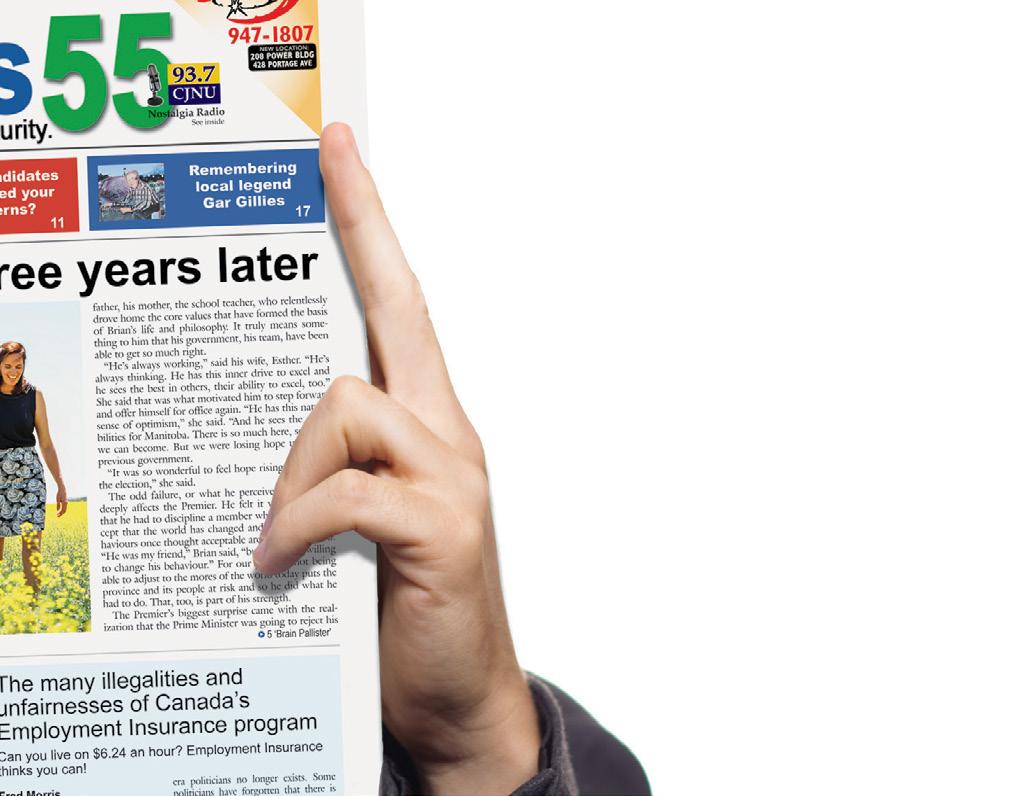







Daniel Raiskin
Ilook toward the 2025/26 with a sense of excitement and great responsibility. I am excited about the WSO welcoming back some truly exceptional artists who have become dear friends of the orchestra and our audiences, including Alexei Volodin, Bryan Cheng, Stewart Goodyear, Nodoka Okisawa. We are also welcoming new names that will, without any doubt, bring lots of enthusiasm together with their world-class artistry such as Alexandra Conunova, Kevin Zhu, Rune Bergmann, Robert Moody, and Boris Allakhverdyan. I mentioned responsibility earlier, and indeed—today more than ever, we artists feel called to infuse the daily lives of those around us with a sense of hope and light! Beethoven once noted that “music can change the world,” and 250 years later Bono, the iconic lead
singer of U2, has taken the idea a step further, “music can change the world because it can change people”! I have a feeling that music has to change people and the world we are living in.
To do so this season, we rely on the power of music by such universally loved composers as Mozart, Beethoven, Mahler, Grieg, Sibelius, Nielsen, Tchaikovsky, Rachmaninoff, Shostakovich, Khachaturian, and Bernstein, to name a few. And we highlight the music of Canadian composers and are proud to present works by Samy Moussa, Vincent Ho, and Harry Stafylakis, WSO’s Composer in Residence, whose Third Symphony will see its world premiere here in Winnipeg. I am also tremendously proud to present one of the leading North American composers of today, Christopher Theofanidis, as WNMF’s Distinguished Guest Composer for next year’s festival.

One project I would like to highlight separately.
Over the past seven seasons I have often shared the stage with many exceptionally talented young musicians from Winnipeg, some of them children of our own WSO players. In March 2026, I will most proudly share the stage with my son, Ilia. He will be the soloist in the Concerto for Drum-Set and Orchestra The Tyrant’s Crush by Stewart Copeland, the legendary drummer of The Police and himself a prolific composer of symphonic works and opera!
Stewart Copeland will also come to Winnipeg to perform during one of our smashing Live at the WSO programs, The Police Deranged, a symphonic tribute to the legendary UK rock band whose songs I grew up with and still listen to with great pleasure.
Scan this QR code to learn more about the WSO’s 2025-26 season.
Daniel Raiskin is the WSO Music Director.
Andrew speaks with affection for his university voice teacher, Mel Braun, and choral conductor, Henry Engbrecht, who helped him develop his musical skills, supported him in his early ventures, and remain friends and mentors to this day. They also opened the door to the complexities and beauty of the musical treasures that captivated him. He has always found inspiration in the great choral and musical composers of earlier times such as Palestrina, Monteverdi, and Bach, and this aesthetic is a strong influence in the soundscapes that he creates in his compositions today. Balfour founded a musical ensemble, then known as Camerata Nova, in 1996. The group was made up of friends and fellow music students he had come to know through his studies
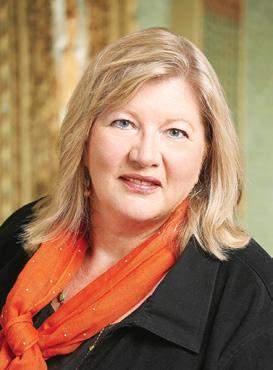
and participation in choirs. The founding of the choir also provided the opportunity for the start of his compositional career. He wrote music for the choir, and as his skills developed, he was also developing his knowledge and appreciation for his Indigenous Heritage. He was born in the Fisher River Cree Nation, but he was adopted into a non-Indigenous family when he was six months old. As an adult, he started to explore his Indigenous culture and stories, and he used music and compositions to tell the stories and explore the heritage that was part of his past. This exploration has been extraordinarily fruitful, and the wonder of the stories he tells through his music has won him a place in concert programs, recordings, CBC broadcasts, and concert halls throughout the country.

His musical passion for early music and the human voice has given him a palette of sounds that are remarkably effective as a framework for the tales of Indigenous traditions, myths, and reconciliation inspired journeys. His music has been recorded by a number of choirs, and one of his recordings
was nominated for a Juno award. You can discover the beauty and impact of his work this fall in a concert scheduled for October 29th at the new Desautels Concert Hall at the University of Manitoba. The concert is a joint venture between his choir, Dead of Winter, and the International Cello Festival. This concert features a new composition by Andrew as well as a medieval and contemporary works performed by the choir with cellists Inbal Segev, Denise Djokic, and Cameron Crozman. This is a concert you should not miss. Tickets can be purchased on the Dead of Winter website. Later in the fall, a recording of his work Notinikew: Going to War will be released.
Something very special has been created in the musical compositions of Andrew Balfour brought to life by the wonderful choir he founded which is now his compositional instrument. Trudy Schroeder provides project planning and management services to the community through Arts and Heritage Solutions.

For how many generations have people been arguing, is it nature or nurture? Nobody will ever win this argument. The truth is, it is neither nature nor nurture, it all comes down to personal choices. Unless, in some rare cases, because of an impediment, they are unable to think rationally, humans can make choices for themselves. We all can choose to follow our instincts, to follow our programming, or to choose totally different behaviours. We can all plan our own futures and decide what we need to do so we can achieve our personal goals. We can all make choices for ourselves. You are your own boss. It is as simple as that.
Two men were arguing: one stated the emperor’s clothes were blue and the other stated they were purple. It took a little boy in the audience to point out the fact that the emperor was not wearing any clothes at all; he was completely naked. Both men were wrong, but they would argue until they were black and blue in the face to prove they were right.
religion is a form of insanity. Many religious people are trying to run away from reality for one reason or another.
What is the better hockey team? The answer is none of them are. All teams are made up of local and foreign players. No team is a consistent winner, and no team is a true representative of their “home” city. In fact, hockey teams have no “home” city, they may freely move from one city to another if their owners so choose.

Wayne Weedon Food for Thought
The Canadian psychiatrist, Doctor Eric Berne, in his book, “Games People Play”, stated there is no such thing as an alcoholic. However, there is a game of Alcoholic with the players vying for control of the others. To play this game, Alcoholic is joined by Persecutor and possibly three other players, Rescuer, Patsy, and Agitator. If the players continue being distracted from their serious real-life problems, the game will continue.
What is the true religion? Is it Catholic? Protestant? Moslem? Hinduism? Judaism? Zoroastrian? Until people realise that all religions are false and there are no gods, no heavens, and no Hell, arguments and wars about religion will continue. The truth is that every religion has been invented by some person or some group of people. This is why Doctor Alfred Adler stated that
Does a hockey fan become a better person if his “home team” wins the Stanley Cup? The truth is winning or losing a Stanley Cup would have no effect whatsoever on any fan’s life. Like childish sitcoms and rock concerts, hockey is commonly used as a distraction from a person’s real-life problems. These problems do not go away if someone tries to run away from them by absorbing themselves in some sort of distraction. Eventually these problems will come back to slap that person in the face. Would it not be better to face these problems and deal with them before they grow into huge unmanageable catastrophes?
What would the world look like if all persons took responsibility for their own choices and their own actions, if people quit trying to blame their behaviour on others? Maybe people would pause to think before they reacted? How different our world would be if everyone took charge of their own lives and their own futures, to begin setting goals and to consistently work towards these goals.
Most people’s desires and their actions contradict with each other. What would happen if their actions coincided with their desires? What if they began thinking before they reacted? What if they paused and considered if their actions would take them closer to their

Was Benjamin Franklin on to something?
goals and desires? What if they only did things which would lead them to what they want in life? How long would it take for their lives to completely turn around?
What if people started following Benjamin Franklin’s advice on how to live which he detailed in his autobiography? How would someone’s life be altered if they seriously read such books as Thomas Paine’s “Common Sense”, or books written by Robert Green Ingersoll, Gerald Massey, Richard Dawkins, and Oliver Wendall Holmes? Would they have a better understanding of running their own lives?
What if everyone quit trying to blame others for their failings? What would this new world be like? John Lennon tried to imagine it. Can you?
Wayne Weedon is an Indigenous Manitoba writer of novels and short stories. To sample his wonderful work go to Wattpad.com.
Last month, Romel wrote, “The current era is one of managed decline, marked by economic stagnation, persistent inflation, and a quiet, quarterby-quarter erosion of the average Canadian’s standard of living."
He then reminded us of lessons that should have been learned from the past.
“The Canadian economy of the early 1990s was in a state of near-collapse. The unemployment rate soared to a staggering 11.4% in 1993, the highest level since the Great Depression. At the heart of this crisis was the national debt
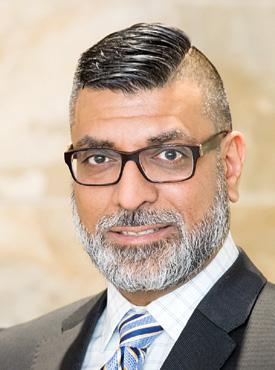
“The pivotal 1995 federal budget was a declaration of war on the deficit. Total program spending was slashed by almost 10% over two years, a reduction of over $25 billion.
“In the decades that followed, a new and seductive economic philosophy took hold. This new orthodoxy argues that a government can outgrow its debt so long as the economy’s nominal growth rate remains higher than the interest rate on its debt. The first pillar, a belief in a productivity boom from technological innovation, is a form of magical thinking for most countries.
“The second pillar is a reliance on mass immigration to expand the labor force and drive aggregate demand.”
• • •
His advice continues now in Part 2:
The contrast between this model and a more disciplined approach is playing out in real time. Canada is currently experiencing persistent stagnation. Real GDP has contracted, the combined federal-provincial net debt-to-GDP ratio is projected to reach 74.8% in 2025, and core inflation re-

mains a stubborn problem. Half a world away, Argentina’s President Javier Milei inherited an economy in collapse, with hyperinflation at 211%. His response has been "chainsaw" economics: a program of extreme austerity, including massive spending cuts and a complete stop to the central bank printing money to finance deficits. The success has been undeniable. The monthly inflation rate, which was over 25% when he took office, has plummeted. This shock therapy came at the tremendous price of a severe recession and surging poverty, but it stands as a stark refutation of the Western consensus, proving that there is a viable alternative to the slowbleed stagflation that now characterizes many developed economies. Argentina is now poised to lead the world in economic growth and prosperity for its citizens with an IMF projected growth rate of 5.5% for 2025.
If the path of debt-fueled growth is a dead end, Canada must chart a course based on its real, tangible, and globally significant economic strengths. The cornerstone of this strategy should be the strategic development of its natural resource sector. Canada’s most profound comparative advantage lies in its vast endowment of natural resources. It is one of the very few developed nations that is a net exporter of energy, possessing the world's third-largest proven oil reserves. This is a geological and economic fact that has been tragically under-leveraged.
A new pipeline to tidewater is not merely an infrastructure project; it is an essential tool of national economic strategy. It is a nation-building project critical for enhancing energy security, diversifying export markets away from an overwhelming dependence on the Unit-
ed States and capturing the full global market value for Canadian resources.
Manitoba presents a logical and strategic anchor point, as the province is itself a significant energy producer with existing infrastructure.
The economic impact would be profound. A new pipeline would represent one of the largest private-sector capital investments in the country's history, triggering billions in spending without adding a dollar to government debt. This would directly create thousands of high-paying, skilled-trades jobs during construction and support hundreds of permanent, high-wage jobs in operations. The ripple effects would activate a vast domestic supply chain, creating thousands of additional jobs across the country. A new pipeline is also a direct conduit for a massive, long-term stream of government revenue. The oil and gas industry already generates billions in taxes and royalties for governments, revenue that would be significantly enhanced by a new pipeline through property taxes and corporate income taxes that directly fund schools, hospitals, and roads.
Failing to build new export infrastructure is an act of economic self-harm. Canada's lack of pipeline capacity forces its producers to sell their heavy crude oil at a significant discount to the North American benchmark. This price differential represents a direct wealth transfer from Canadian producers to American refiners, a loss that amounted to over $20.7 billion in foregone revenues in just five years. Building a tidewater pipeline is therefore a fundamental matter of economic sovereignty.
Canada now stands at a critical crossroads. It can continue to follow a failing global orthodoxy, accepting a future of stagnant growth and a steadily eroding standard of living. Or it can choose a different path, one based on fiscal reality and a clear-eyed recognition of its own powerful comparative advantages.
This is not a decision between the past and the future. It is a choice between a future of diminishing expectations and one of renewed prosperity, built not on fashionable theories, but on the enduring foundations of its own real wealth. Romel Dhalla, is President of Dhalla Advisory Corp., provides strategic corporate finance advice to companies and high net worth individuals and was a portfolio manager and investment advisor with two major Canadian banks for 17 years. Contact him at romel@dacorp.ca. Any views or opinions represented in this article are personal and belong solely to the author and do not represent those of people, institutions or organizations that the owner may or may not be associated with in professional or personal capacity, unless explicitly stated. Any views or opinions are not intended to malign any religion, ethnic group, club, organization, company, or individual.
•
•
•
Editor’s note: Backing up what Romel is saying is this snippet from the Canadian Press reporting on the Parliamentary Budget Officer comments at Finance Committee meeting in Ottawa: Ottawa – “Stupefying,” “shocking” and “unsustainable” — those are some of the words Ottawa’s fiscal watchdog used Thursday (Sept 25) to describe his scathing forecast for federal finances ahead of the long-anticipated fall budget.
Interim parliamentary budget officer Jason Jacques published an updated economic and fiscal outlook on Thursday in which he projected the federal deficit would balloon to $68.5 billion this year, up from an estimated $51.7 billion last year.
He also expects the federal debt-toGDP ratio, which is previously a major fiscal anchor for Ottawa, will no longer decline in the coming years.
Jacques told a parliamentary committee Thursday afternoon it is the first time in 30 years he has seen a projection where that key metric rises over time.
Last week I was walking down a Safeway aisle, looking for honey. At first, I noticed a presence at the corner of my eye. He didn’t walk past me as most children his age would. He was very small but very aware, more aware than a typical child his age. He was obviously with a woman. He stopped so that I could not miss him, almost directly in front of me, and said “Hi!”.
“Hi,” I replied, still not fully paying attention to him. He repeated, “Hi!” not moving an inch out of my way. I finally looked at him properly, said “Hi,” again, and noticed his beautiful brown eyes. Smiling, I said ‘Hi,” again, then “How are you?”
Before he could answer, the lady with him, his grandmother, told me, “He just told me he talks to angels. Children stop talking about things like that when they are about four years old,” she added. “He is still connected.”
diately described what she had felt. Somehow neither one of us was surprised. “How old is your grandson?” I asked. “18 months,” she told me.
“Eighteen months?” I repeated in disbelief, totally surprised by her answer. He acted and talked as if he were at least a year or two older.

“I know this to be true” I told her. Now I squatted down in front of the small boy. His eyes were looking straight into mine. He seemed too young to be that present and alert, yet present he was. Down at his level, I said, “You are talking to angels because you just came from them, and I talk to angels because I work with people who are going back to them. I work with people who are dying.”
I hardly finished my sentence when his grandmother felt shivers going through her body, a clear confirmation that I was speaking words of truth. She imme-
We exchanged a few more words, only for me to learn that his name was Love.
“My name is Dove,” I shared, to which the little boy replied, “I knew that.”
I couldn’t believe my ears, and a stream of the same energy mentioned earlier went through my whole system.
The encounter was brief and profound. I’m still thinking about it and trying to recall, did I pray today to meet true, pure love? Hmmmm... I might have.
To some of you, the encounter I have described might sound like a “Woo, Woo” experience, and yet countless people throughout the world have had experiences beyond the limitations of the five senses. Many of these experiences take place around accidents, personal life storms, or at the bedside of dying people. It is at that time where the logical mind becomes inept to explain or overpower the states beyond logic. Once experienced, these become deeply ingrained in us and so powerful that nothing can overturn them. They change lives! Many health-care professionals share and testify to having experiences like this or being a part of them while caring for their patients or in their personal lives.
There’s one thing we all have in common … death. There’s no way around it. For many of us it was brought to our attention from a very early age. The ever popular (maybe not so any more) nursery rhyme and lullaby Rock-a-bye Baby. Remember how it ends? When the bough breaks, the cradle will fall and down will come baby cradle and all. Isn’t that wonderful? But, my favourite was always the bedtime prayer so many of us recited night after night as we knelt dutifully beside the bed that ended with the words, and if I die before I wake, I pray the Lord etc. How comforting is that to a little kid? I see it as cruel and unusual punishment at such a young and vulnerable age.
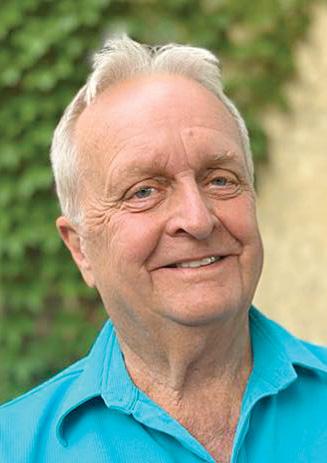
These days Celebrations of Life are the growing trend. They are an event to recognize, appreciate and celebrate a persons life in a more casual and dare I say fun way. Less ceremonial. Some people aren’t even doing that. What a shame to plan a party where all your family and friends are going to be there but, you can’t make it.
“Always go to other people’s funerals, otherwise they won’t come to yours.”

If you are doubtful, for starters you might want to check Dr Tara Swart’s online interview in which she describes her experiences around the death of her beloved husband. As a neuroscientist and psychiatrist, she had never believed in those kinds of extrasensory experiences being possible.
There have been numerous studies conducted throughout the world which prove the authenticity of these experiences beyond the five senses. People who have had them seldom share them with others out of fear of ridicule. But they are real, as real as the rising sun. We humans are capable of experiencing far more than our logical mind would like us to believe.
Birth and death challenge logic.
You simply can’t make it up!
Zofia Dove is an international keynote speaker, author and producer, host and director of the series “Discovering Beauty Everywhere”.
I’m going to, as I have in the past, sprinkle a few of my favourite quotes about death from people whose names you might or might not be familiar with. I have left out their names for space sake and the fact that so many quotes might be accurately attributive.
“If any of you cry at my funeral I’ll never speak to you again.”
In the days and weeks to come I expect I will be attending a funeral or two. They seem to be arriving at a faster rate these days than in the past. It turns out, as I am sure you have noticed, funerals are not as common as they used to be.
The notion of death is something I have been thinking about recently. I suppose that is somewhat common to some of us who can very likely count how many Christmas’s’ we have, or hope to look forward to, on our respective digits. I remember my grandmother not having any love of the yuletide season. Both her two husbands and a gentleman who never solidified their relationship in matrimony but was good enough to make her a mother once again all died around this festive season.
"My grandmother was a very tough woman. She buried three husbands and two of them were just napping."
Last night (at the time of this writing) I received a text from the daughter of an old friend of mine who has been living in the Kelowna area for many years. He hadn’t been feeling up to snuff for a number of weeks. He went into the hospital to be checked out and ended up checking out, as it were. He had both


a heart attack and a stroke at the same time. What are the odds of that? I suppose his time here was over. As we all know tomorrow is promised to no one.
“Dying is a very dull, dreary affair. And my advice to you is to have nothing to do with it.”
And then, first thing this morning I learned that a guy I went to school with passed away. We had just had a beer with a group of other “old” guys a few weeks ago. He had had health issues for some time and of course some will say “It’s was a blessing.” I have often wondered to who? To the person who has passed especially if they were in great pain? I suppose so. Or to the family that had to watch the pain and suffering the person experienced? In the end, I guess
to everyone involved. Still, it’s hard to say goodbye.
“I don’t mind dying, the trouble is you feel so bloody stiff the next day.”
Irish playwright George Bernard Shaw once quipped, "Life does not cease to be funny when people die any more than it ceases to be serious when people laugh." This quote reminds us that humor and sorrow can coexist. Finally, “I’m not afraid of death; I just don’t want to be there when it happens.” Well, actually you can. I’ll fill you in next month.
Wouldn’t it be nice, in a way, if we could all just die laughing?
Take a trip down Jim’s free musical memory lane podcasts online at Lifestyles55radio.ca




Every year, I am humbled and inspired by the generosity of Manitobans who come together to support kids who need care at HSC Children’s Hospital. The Ice Crystal Gala is one of my favourite nights of the year. It’s a chance for families to gather, celebrate, and make a real difference for sick and injured kids in our community.
On Saturday, October 18, 2025, we’ll be bringing the Island Vibes to the RBC Convention Centre Winnipeg for an unforgettable evening of fun, laughter, and purpose. From live entertainment and a delicious dinner to exciting auctions, kids’ activities, and a lively dance floor, there truly is something for everyone at this family gala.
lion, proof of the incredible generosity of our community. This year, I know we can make an even greater impact for the thousands of kids and families who depend on Children’s Hospital each year.
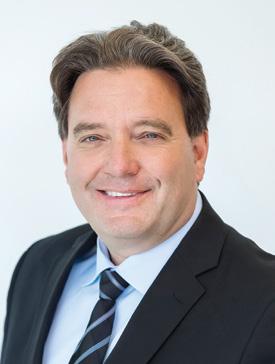
Last year, our Rhinestone Rodeo Gala raised a record-breaking $1.5 mil-
Re Cowboys: I saw Gene Autry ride Champion in the Winnipeg auditorium in the 1950s. (Did you miss it?)
Also, you missed the Cisco Kid and his sidekick Pancho and his horse Diablo.
What about Hopalong Cassidy (William Boyd) and his horse Topper?
Further back, there was Tex Ritter and don’t forget Audie Murphy, the Second World War hero.
P.S. I had all the guns, etc. but usually opted to an Indian!
Laura
Recently, I learned that the City of Winnipeg, in partnership with the Manitoba Government, plans to build housing for refugees, people from encampments, people with mental health challenges, and youth exiting care.
https://orlikow.ca/2025/08/city-ofwinnipeg-invites-residents-to-learnabout-new-supportive-housing-site/
It was interesting to learn that the city has consulted with 18 community agencies – many of which work in or serve North End residents to gain feedback about the Supportive Housing plan. But disturbing was that the government didn't bother to consult the residents of River Heights, which is one of the proposed housing sites. The people who live and pay taxes in that community will be impacted by the plan.
When I raised that concern to a city employee at the September 4th information session, he responded that the information session was a “consultation”. From my perspective, this poster presentation informing us about what had already been decided was anything but a consultation. Many questions remain unanswered, concerns were dismissed, and better upstream solutions that address the root cause of homeless-

When you buy a ticket, a table, or a sponsorship package, you’re not just attending a wonderful evening, you’re helping us #ContinueCaringForKids and ensuring families have access to the best possible care, close to home.
I warmly invite you to join us.
Get your tickets today at goodbear.ca/IceCrystalGala.
As we come together to celebrate at the Ice Crystal Gala, I want to share another important way you can make a difference. Right now, we are embarking on a bold plan to modernize the inpatient rooms of CK5 at HSC Children’s Hospital. This
The location at 75 Poseidon Bay is a concern for many who live in the neighborhood. It couldn’t be worse as it is near a soccer field, high school, elementary school, and library with children’s playground. Many of the people listed for these housing residences are known for criminal activity, addictions, and profound mental illness. Exposing children to needles and other related safety risks is incomprehensible. Further, what will happen to the much-needed parking space at the Pan Am Clinic and Diamond Athletic?
Why don’t they use vacant buildings downtown or take the opportunity to revitalize some of the boarded-up homes and vacant lots in areas that need sprucing up? Why would they disturb and develop an area that doesn’t need it?
Why don't they build proper detox, rehab, and mental health treatment facilities instead of not a housing complex next door for the many people with addictions and mental health illness found homeless on the streets?
I didn’t meet anyone at the session who was in favor of this supportive housing plan. Some felt the government doesn’t care what the taxpayers have to say. It sounds more like a dictatorship than democracy.
Something that pulled on my heart strings was a 97-year-old lady who made the effort to attend the information session. She has lived and paid taxes here for a very long time. When she looked at the list of groups who have been selected to receive supportive housing she said, “I wish someone would build me a home”.
One has got to wonder how it is that newcomers can get a Canadian government to build them a new home while our senior population and our veterans can’t.
Charlene, A River Heights resident.
In the August 2025 Lifestyles 55 newspaper you wrote a couple articles about freedom in Canada being eroded. Freedom is something that is dear to people in democracies, but freedom comes responsibility and there have to be rules governing this freedom.

is where children with cancer and blood disorders receive care.
These rooms haven’t been significantly updated since 1986 and for kids spending weeks or months in hospital, outdated spaces can make their healing journey more difficult. Families tell us they need brighter rooms where they can rest, connect, and support their child. Most of all, they need spaces for heeling and hope. Help us transform sterile, clinical rooms into healing spaces that are fam-
without rules
As for responsibility, if I choose not to vaccinate due to misinformation from social media or the pulpit, should I have the right to put others, especially children, at risk of being infected? If my choices can put others at risk, then it should be curtailed. You may remember Spock from the original Star Trek, he once stated the rights of the many outweigh the rights of the few and that should be adhered to when exercising our freedom of choice.
You mentioned tattoos and abortion and not getting a vaccine are examples of choices some people make. There are numerous reasons why a person needs to have an abortion, yet you imply abortions shouldn't be publicly funded. Using that logic, anyone who becomes hospitalized due to being unvaccinated shouldn't be covered either and perhaps should cover the cost associated with any of their contacts that get hospitalized. An unvaccinated person who becomes infected will spread disease throughout schools, airplanes and other areas of society.
You also wrote about the occupation of Ottawa by truckers. The right to demonstrate is a freedom we have and should not be taken from us; however, the trucker convoy moved from a demonstration to an occupation after about three days, especially when they set up bouncy castles, etc. As for the PM addressing the group, I agree with his choice not to. I'm 70 years old and demonstrations have been happening on Parliament Hill as long as I can remember and I can't recall the PM ever making an appearance to talk with them. By speaking with the truckers, he would have legitimized the occupation, leading to future protests degrading into the same situation if the PM doesn't submit to their demands. When the truckers were asked to move, after about three weeks they refused, and I believe the use of exceptional powers was justified. After an inquest the courts deemed the government had overstepped their authority and was held accountable. A definition of what a demonstration is must be agreed upon so as to prevent this from happening again, also the government must create another act that gives the police stronger powers to act without bringing in the "big" guns.
ily-centred, safe, and uplifting. Help us improve treatments through childhood cancer research happening right here in Manitoba at Children’s Hospital Research Institute. Your gifts will also support programs like therapeutic play, art therapy, Indigenous healing supports, and technology that connects kids with learning, friends, and fun while they heal. That’s why childhood cancer research is part of this spotlight campaign.
Let’s transform the pediatric oncology ward, a place where children fight some of the toughest battles of their young lives. Your donation will ensure that these kids, and those who come after them, receive care in spaces that reflect the same excellence and compassion as the medical teams who walk beside them.
This is more than a renovation. This is about dignity, comfort, and hope. Let’s make anything possible.
Please consider donating today at goodbear.ca/donate.
Stefano Grande is the president and CEO of Children’s Hospital Foundation of Manitoba.
While we are on the freedom of choice, I believe I should have the right to a dignified death. I have seen both my father and mother-in-law die from dementia and there is nothing dignified about it. Sitting in a chair not knowing anyone, drooling and soiling yourself, having to be spoon fed, and being hoisted into and out of bed. Once again, religious organizations are trying to take my freedoms away and force their beliefs on me.
Freedoms as a Canadian right, but as stated, freedoms come with responsibility and rules. Freedoms cannot harm others and must follow a society norm and be within the laws of Canada and be dictated by religious beliefs of a few.
Arthur Matthews
Dear Arthur:
You have made some valid points because there are degrees of everything and nothing is black and white. Still, many of the incursions into our freedoms that you cite have been contested in the past and the decisions taken then are being overridden now.
The right to refuse medical treatment, including vaccinations, is one of these. Do you really believe that a few people refusing to be vaccinated are going infect the many? We know that at a certain point of acquired immunity the chances of being infected are gradually and greatly diminished. Nothing is for certain – not even vaccination. Think about the illogic of this argument applied to seat belts. We accept this restriction because we are forced to, but the chances of needing that “protection” are very small and the “cost” it would add to medical care even smaller. Spock’s admonition does not apply here.
I agree that the truckers overstayed their welcome (although I don’t know that setting up a bouncy castle was an egregious act), but the Prime Minister could and should have listened to their concerns instead of hiding. He didn’t have to act, but he needed to listen. And by the way, the authorities in Ottawa did not handle any of this protest very well.
I do not disagree with MAID. It is also a freedom, although asking for it raises the question about whether any particular doctor should be forced to agree to the request. They have the freedom to follow their own consciences, too.
Thank you for your letter. We do agree on a number of things, and it is okay to disagree on others. That is the most important freedom of all.
Dorothy
Conrad Eder warns that Ottawa’s EV subsidies have backfired, fueling a trade war with China and slamming Western Canada’s canola farmers with billion in losses. One political gamble, countless unintended losers.
Conrad Eder
Western Canada’s canola farmers are the latest victims of misguided government industrial policy
Economic policy is more like gardening than engineering. You can shovel all the money you want into trying to grow coconuts in a Canadian winter, but you’ll achieve far better results—and feed many more people—by planting potatoes in the spring and letting nature run its course.
For Canada, that means embracing policies that create fertile ground for all businesses to compete, innovate, and serve consumers. Ottawa, unfortunately, prefers to play God with the weather. What began as economic tinkering has triggered a cascade of interventions now devastating Canada’s canola industry.
Rather than letting the market determine Canada’s strengths, federal and provincial politicians decided they knew better, wagering $52.5 billion to lure EV and battery manufacturers to Canada. Massive public subsidies were placed on a handful of firms and technologies.
The Parliamentary Budget Officer delivered a sobering assessment of this boondoggle: it could take decades for taxpayers to break even on these subsidies—and only if nothing goes sideways.
Well, you know what they say about best-laid plans.
After committing billions, Ottawa faced an awkward truth: Chinese manufacturers were eating our lunch, offering EVs at lower prices, thanks in part to their own subsidies. Instead of reversing course, Ottawa hit the panic button and slapped a 100 per cent tariff on Chinese EVs.
Let’s be clear: this wasn’t about national security or consumer protection. It was about salvaging one of the largest industrial bets in Canadian history.
Yes, some sectors require targeted oversight to protect privacy and safety. EVs aren’t one of them. Their risks can be managed with targeted regulations and technical safeguards. But the tariffs do real damage by blocking affordable EVs and denying Canadians the right to judge for themselves.
Predictably, China didn’t take the tariffs lying down. In March, Beijing slapped 100 per cent duties on Canadian canola oil. In August, it hit canola seed with 75.8 per cent tariffs, effectively shutting out Canadian farmers from a $4.9-billion market.
Ninety-nine per cent of canola fields are in Western Canada. Canola is Canada’s top crop export, supporting tens of thousands of Prairie jobs and generating over $43 billion annually.
Another trade war, another loselose. Canadians pay more for EVs. Chinese consumers pay more for food.
And now, predictably, agricultural lobbyists are seeking Ottawa’s help. The government—having started the fire—has responded with $370 million in biofuel incentives and ex-

panded financial support for canola producers. More subsidies. More distortion. Another Band-Aid for another self-inflicted wound.
Ironically, Canada’s farm sector already receives substantial government support. Now it’s receiving even more just to survive Ottawa’s protection of a separate subsidized industry. That’s the trouble with industrial policy: helping one sector often means hurting another. And taxpayers get the privilege of funding both.
There’s a better way forward: it doesn’t involve doubling down on mistakes. The solution is to stop the engineering and let the economy
breathe. Lower taxes. Fewer regulations. Neutral infrastructure investment. These create the conditions for businesses to rise or fall on merit. That’s how innovation flourishes: through competition, not cabinetlevel favouritism.
It’s not hard to follow the dominoes. EV subsidies triggered Chinese tariffs. Tariffs triggered canola retaliation. Canola retaliation now triggers demands for bailouts.
One attempt to pick winners has manufactured a long list of losers.
Had Ottawa stuck with free-trade principles, Canadians could’ve had more affordable EVs, taxpayers would’ve saved billions, and canola
farmers would still have access to a vital export market. Instead, we get a chain reaction of policy “fixes,” each one compensating for the damage done by the last— each one digging the hole deeper. When governments try to engineer economic outcomes, citizens foot the bill. The real lesson? Governments are great at creating problems. Markets are better at solving them. If Canada wants a prosperous economic future, it must stop betting the farm on political hunches and let competitive markets do the cultivating.
Conrad Eder is a policy analyst at the Frontier Centre for Public Policy.



Creative Retirement Manitoba Inc. 204-481-5030, hello@crcentre.ca www.crcentre.ca
WINNIPEG
20 Fort Street Seniors Club
2200-20 Fort Street / FortStSeniors@Shaw.ca
Rainbow Resource Centre 545 Broadway / 204-474-0212 ext 255 OTR@rainbowresourcecentre.org www.rainbowresourcecentre.org
The Salvation Army Barbara Mitchell Family Resource Centre 51 Morrow Avenue / 204-946-9153 sheila.keys@salvationarmy.ca
Stay Active - Stay Connected
www.manitobaseniorcommunities.ca
ERICKSON
Comfort Drop In Centre 31 Main Street / 204-636-2047 areas@mymts.net
FLIN FLON
Flin Flon Seniors 2 North Avenue / 204-687-7308
GILBERT PLAINS
A&O Support Services for Older Adults Inc. 200 - 207 Donald Street 204-956-6440 / Toll Free: 1-888-333-3121 info@aosupportservices.ca www.aosupportservices.ca
Archwood 55 Plus 565 Guilbault Avenue / 204-416-1067 archwood55@shaw.ca archwood55plus.wildapricot.org/ Bleak House Centre 1637 Main Street / 204-338-4723 bleakhousecentre@gmail.com www.bleakhousecentre.com
Brooklands Active Living Centre 1960 William Avenue W 204-632-8367 / bpscc@mymts.net
Centro Caboto Centre 1055 Wilkes Avenue / 204-487-4597 ext. 1 executivedirector@cabotocentre.com www.cabotocentre.com
Charleswood Active Living Centre A 357 Oakdale Drive / 204-897-5263 info@charleswoodseniorcentre.org www.charleswoodseniorcentre.org
Dakota Community Centre 1188 Dakota Street / 204-254-1010 ext. 217 seniorresources@dakotacc.com www.dakotacc.com
Dufferin Senior Citizens Inc. 377 Dufferin Avenue / 204-986-2608
Elmwood East Kildonan Active Living Centre 180 Poplar Avenue / 204-669-0750 healthrelations@chalmersrenewal.org chalmersrenewal.org
Garden City Community Centre Seniors 55+ 725 Kingsbury Avenue / 204-940-6111 facilities@gardencitycc.com www.gardencitycc.com/seniors
Golden Rule Seniors Resource Centre 625 Osborne Street / 204-306-1114 goldenrule@swsrc.ca facebook.com/goldenruleseniors
Good Neighbours Active Living Centre 720 Henderson Hwy / 204-669-1710 admin@gnalc.ca / www.gnalc.ca
Gwen Secter Creative Living Centre 1588 Main Street / 204-339-1701 becky@gwensecter.com / www.gwensecter.com
Headingley Seniors’ Services 5353 Portage Avenue / 204-889-3132 ext. 3 seniors@rmofheadingley.ca www.headingleyseniorsservices.ca
Indigenous Senior Resource Centre Inc. A1- 100 Robinson Avenue / 204-586-4595 executivedirector@isrcwpg.ca www.asrcwpg.ca
Manitoba Korean 55+ Centre 900-150 River Avenue 204-996-7003 / www.ksam.ca
North Centennial Seniors Association of Winnipeg Inc. 86 Sinclair Street / 204-582-0066 ncsc@shaw.ca / www.ncseniors.ca
North Point Douglas Senior Centre 117 Euclid Avenue / dzedzora107@gmail.com bkuluk751@gmail.com
Old Grace Housing Co-op 100-200 Arlington Street wellness.oghc@gmail.com
Pembina Active Living (55+) 933 Summerside Avenue / 204-946-0839 office@pal55plus.ca / www.pal55plus.ca
Rady Jewish Community Centre 123 Doncaster Street / 204-477-7539 lmarjovsky@radyjcc.com / www.radyjcc.com
Somali Help Age Association 519 Beverley Street / 204-881-6364 somalihelpage@gmail.com
South Winnipeg Seniors Resource Council 117-1 Morley Ave / 204-478-6169 resources@swsrc.ca / www.swsrc.ca
Southdale Seniors 254 Lakewood Boulevard / 204-257-6171 gm@southdale.ca / www.southdale.ca
Sri Lankan Seniors Manitoba 113 Stan Bailie Drive 204-261-9647 / www.srilankanseniorsmb.ca
St. James-Assiniboia 55+ Centre 3-203 Duffield Street 204-987-8850 / info@stjamescentre.com www.stjamescentre.com
Transcona Council for Seniors 845 Regent Ave / 204-222-9879 tcs@mymts.net / www.transconaseniors.ca
Transcona Retired Citizens Org. 328 Whittier Ave. West 204-222-8473 / trco328@shaw.ca
Vital Seniors 3 St Vital Road / 204-253-0555 stmary@mymts.net www.stmarymagdelenewpg.org
Winnipeg Chinese Senior Association 204-291-7798 / wcsa.wpg@hotmail.com www.winnipegchineseseniors.ca
BEYOND WINNIPEG
BEAUSEJOUR
Beau-Head Senior Centre 645 Park Avenue 204-268-2444 / beauhead@mymts.net
BINSCARTH / RUSSELL
Senior Services of Banner County 204-532-2391 seniorservicesofbannercounty@gmail.com
BOISSEVAIN
Seniors’ Services of the Turtle Mountain Area 204-534-6816 / seniorservicetm@gmail.com
BRANDON
Brandon Seniors for Seniors Co-op Inc. 311 Park Avenue E / 204-571-2050 reception@brandons4s.ca www.brandons4s.ca
Health Checks 204-728-1842 / brandonmbhealthchecks.ca healthchecksbrandon@gmail.com
CARMAN
Carman Active Living Centre 47 Ed Belfour Drive / 204-745-2356 www.activelivingcentrecarman.ca
CRANBERRY PORTAGE
Jubilee Recreation of Cranberry Portage Legion Hall 217 2nd Ave. SE / 204-271-3081
CRYSTAL CITY
Crystal City & District Friendship Club Inc. 117 Broadway St. / 431-867-0122 crystalcityfriendship@gmail.com
DAUPHIN
Dauphin Active Living Centre Inc. 55 1st Avenue SE / 204-638-6485 www.dauphinseniors.com
DELORAINE
Deloraine Community Club Inc. 111 South Railway Ave E / 204-747-2846
Seniors’ Outreach Services of BrenWin Inc. 204-747-3283 / sosbrenwin@gmail.com sosbrenwin.com
ELIE
Cartier Senior Citizens Support Committee Inc. 11 Magloire Street, Suite #1 / 204-353-2470 cartierseniors55@outlook.com
Gilbert Plains and District Community Resource Council Inc. 204-548-4131 / gpdcrc@mymts.net gpseniors.ca
Gilbert Plains Drop In Centre 22 Main Street North / 204-548-2210
GIMLI
Gimli New Horizons 55+ Centre 17 Loni Beach Road 204-642-7909 / gimli55@mts.net www.gimlinewhorizons.com
GLADSTONE
Gladstone Seniors Inc.
32 Morris Ave. North / 204-385-2205
GRAND MARAIS
Grand Marais & District Seniors 36058 PTH 12 / gmdseniors@gmail.com www.gmdseniors.ca
GRANDVIEW
Grandview Seniors Drop In 432 Main Street / 204-546-2272
HAMIOTA
Hamiota 55+ Centre & Restore Community Co-op Inc. 44 Maple Avenue / 204-764-2658
KILLARNEY
Killarney New Horizons Centre 520 Mountain Avenue www.killarneymbseniors.ca
Killarney Service for Seniors 415 Broadway / 204-523-7115 seniorservice@killarney.ca
LA BROQUERIE and STE. ANNE
Seine River Services for Seniors Inc./ Services Rivière Seine pour aînés Inc. 93 Principale Street / 204-424-5285 src@seineriverservicesforseniors.ca seineriverservicesforseniors.ca
LUNDAR
Lundar Community Resources 35 Main Street / 204-762-5378 lcrc@mymts.net
MANITOU
Pembina Community Resource Council 315 Main Street / 204-242-2241 pembinacrc@gmail.com
MINNEDOSA
Minnedosa Senior Citizens Assoc. 31 Main Street S / 204-867-1956 mdsasca@gmail.com
MORDEN
Morden Activity Centre 306 N Railway Street / 204-822-3555 mordenactivitycentre@gmail.com www.mordenseniors.ca
NEEPAWA
Neepawa Drop In Centre 310 Davidson Street / 204-476-5103 Neepawa-dropin@outlook.com www.neepawa.ca/district-drop-in-center
NOTRE DAME DE LOURDES Club D’age Dor Notre Dame 204-248-7291 / ndslchezsoi@gmail.com
PILOT MOUND Pilot Mound Fellowship Centre 203 Broadway Avenue / 204-825-2873
PLUMAS
Plumas Seniors Citizens Club Inc. 102 White Street / 204-386-2029
PORTAGE LA PRAIRIE
Herman Prior Senior Services Centre 40 Royal Road N. / 204-857-6951 hermanpriorcentre@gmail.com www.hermanprior.com
Portage Service for Seniors 40A Royal Road N. / 204-239-6312 psfsmeals@shaw.ca portageservicefors.wixsite.com/psfs
RIVERTON
Riverton Seniors Activity Centre
12 Main Street / 204-378-5155
rdfc@mymts.net / www.rivertonfc.com
ROSSBURN
Rossburn Community Resource Council 71 Main Street / 204-859-3386 rosscomm@outlook.com
SANDY LAKE
Sandy Lake Drop In Centre 100 Main St. / 204-585-2411
Municipality of Harrison Park - Age Friendly Initiative Committee 204-585-5310
SELKIRK
Gordon Howard Centre 384 Eveline Street / 204-785-2092 executivedirector@gordonhoward.ca www.gordonhoward.ca
SNOW LAKE
Snow Lake Senior Centre 71 Balsam Street / 204-358-2151 snowsrs@mymts.net
SOUTH JUNCTION
Piney Regional Senior Services 204-437-2604 / lgdseniors@gmail.com
ST. LAURENT Age Friendly Committee of St. Laurent 204-906-9607
STARBUCK MacDonald Services to Seniors 204-735-3052 / info@mcdonaldseniors.ca www.macdonaldseniors.ca
STEINBACH
Pat Porter Active Living Centre 10 Chrysler Gate / 204-320-4600 ed@patporteralc.com www.patporteralc.com
STONEWALL
South Interlake 55 Plus 374 1st Street West - Oddfellows Hall 204-467-2582 / si55plus@mymts.net www.si55plus.org
SWAN RIVER Swan River & District Community Resource Council 126 6th Ave N / 204-734-5707 resourcecouncil@srseniorservices.com
Swan River Senior Citizens Centre 702 1st Street North / 204-734-2212 THE PAS The Pas Golden Agers 324 Ross Avenue / 204-623-3663 seniorsthepas@gmail.com
THOMPSON Thompson Seniors Community Resource Council Inc. 4 Nelson Rd. / 204-677-0987 thompsonseniors55@gmail.com thompsonseniors.ca
TREHERNE
Treherne Friendship Centre 190 Broadway Street 204-723-2559 / jstate1066@gmail.com
VICTORIA BEACH
East Beaches Social Scene 3 Ateah Road / 204-756-6468 ebssinc1@gmail.com www.ebseniorscene.ca
East Beaches Resource Centre 3 Ateah Road / 204-756-6471 ebresourcec@gmail.com ebresourcec.weebly.com
VIRDEN Seniors Access to Independent Living 204-851-2761 / sail.cao.2023@gmail.com
WINKLER
Winkler & District MP Senior Centre 102-650 South Railway Avenue 204-325-8964 director@winklerseniorcentre.com www.winklerseniorcentre.com








